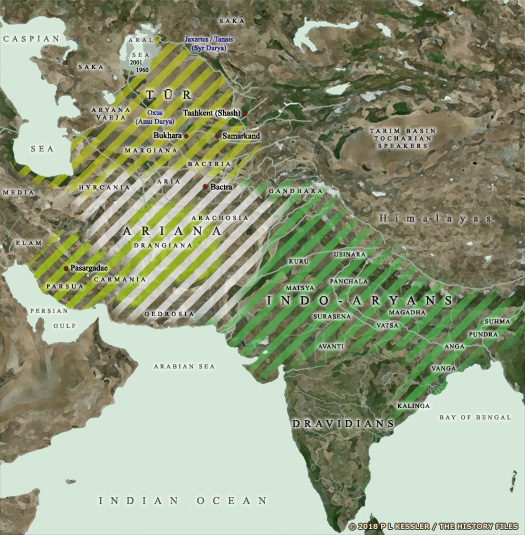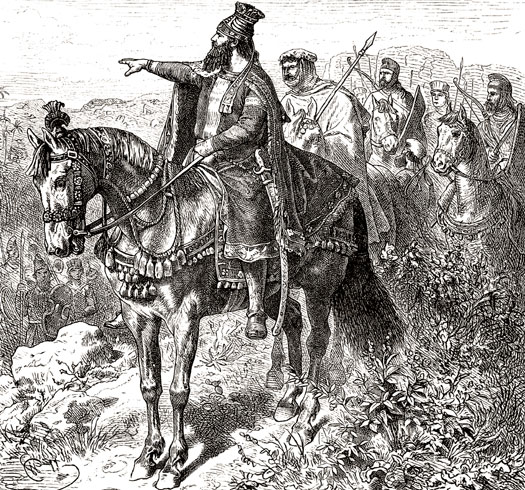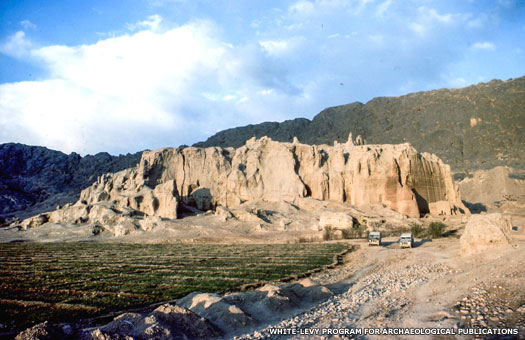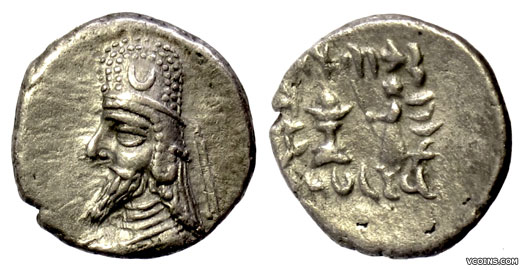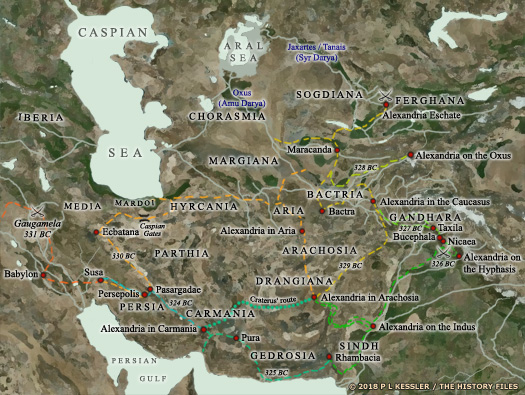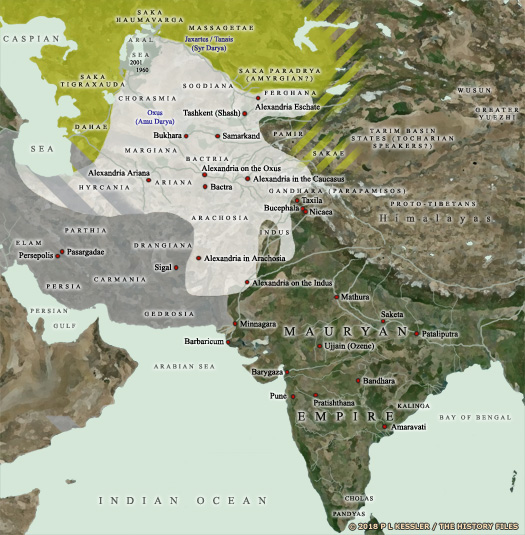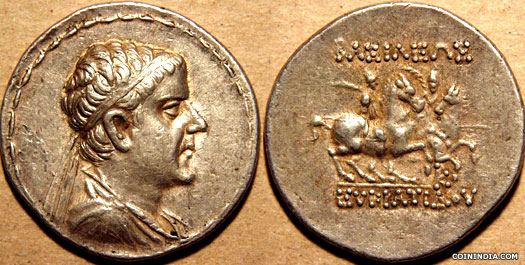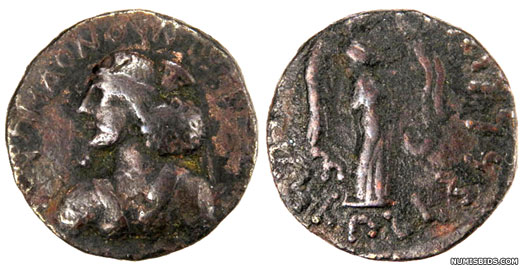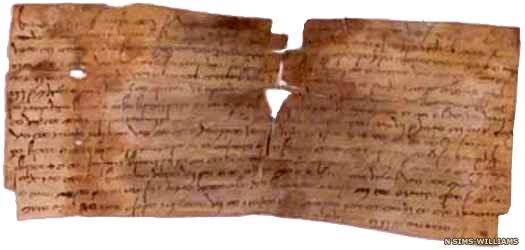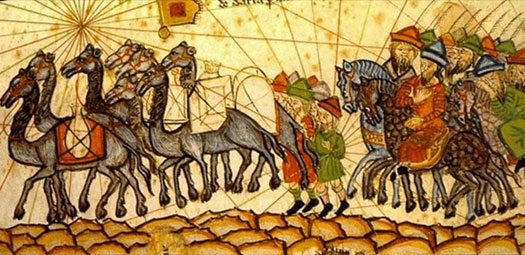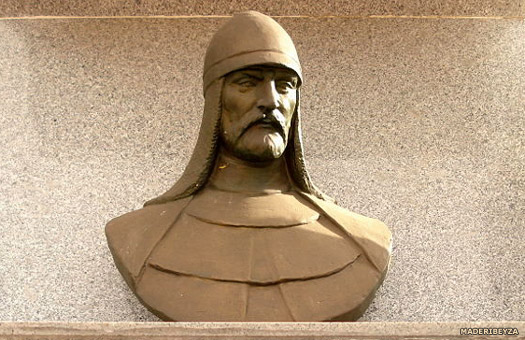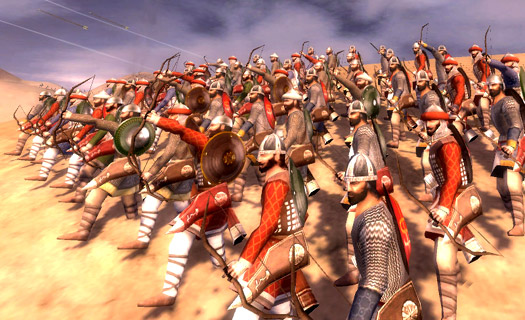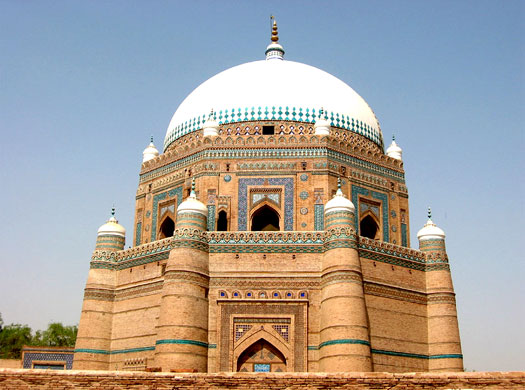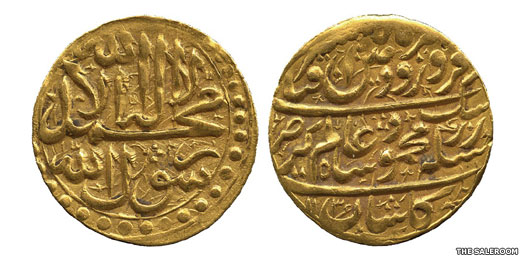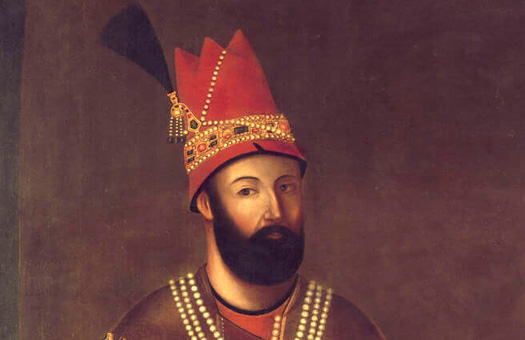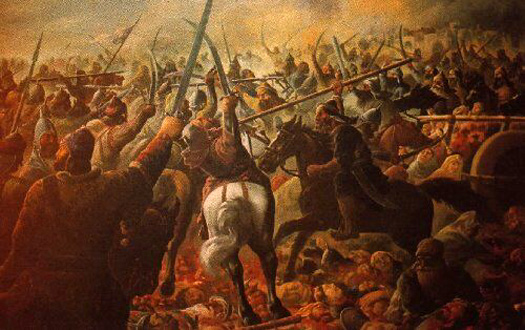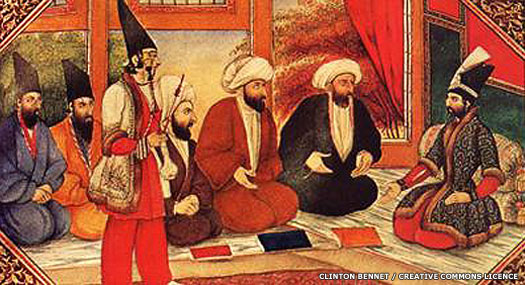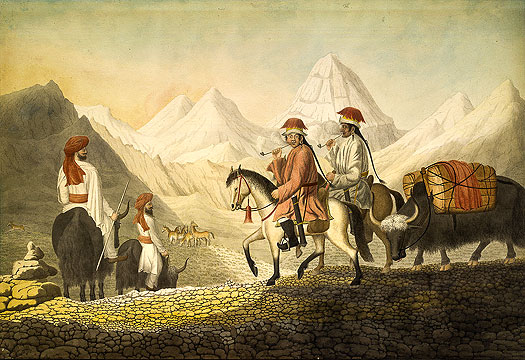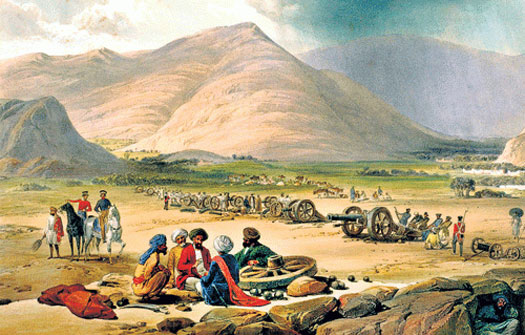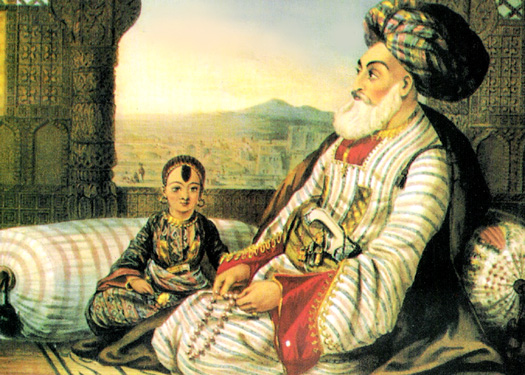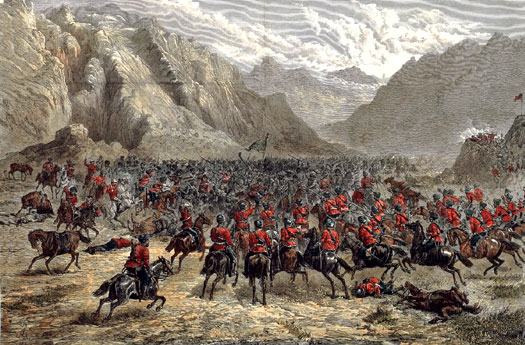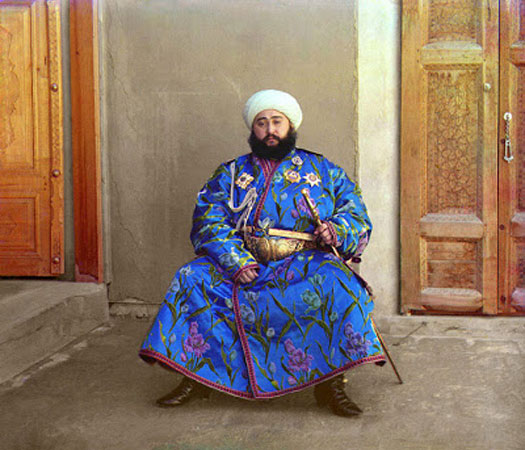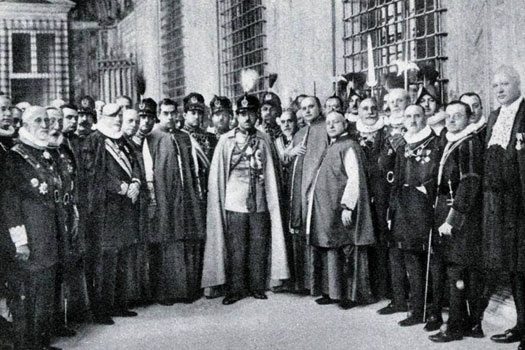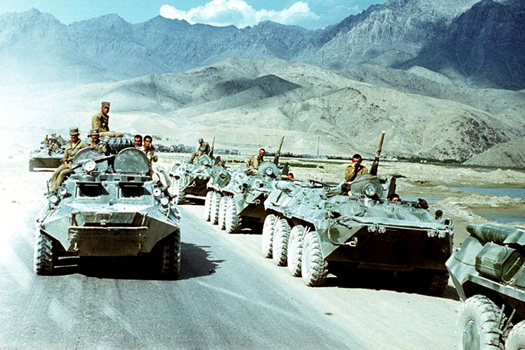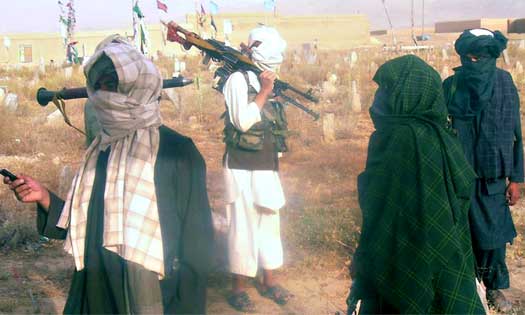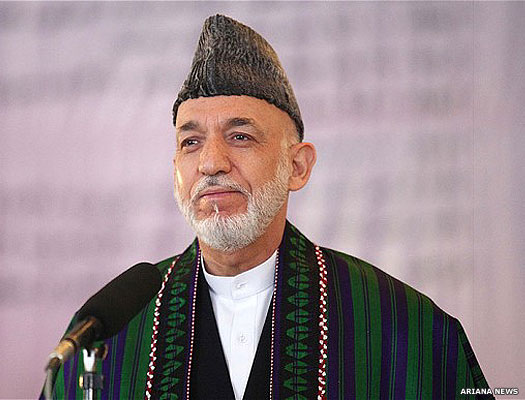
| ARACHOSIA The ancient province of Arachosia lay largely within central areas of modern Afghanistan, and perhaps edging into western Pakistan. Prior to its late sixth century BC domination by the Achaemenid Persians, Arachosia seems to have formed part of a much larger and more poorly-defined region known as Ariana, of which the later province of Aria was the heartland. Barely recorded by written history, its precise boundaries are impossible to pin down. It may have encompassed much or all of Transoxiana, the region around the River Oxus (the Amu Darya), and could have reached as far south as the coastline of the Arabian Sea.
Arachosia formed part of the crossroads between ancient Transoxiana, Persia and India. During the Persian and Greek periods, it was bordered by Aria and Bactria to the north, Gandhar and Paropamisadae to the east, Northern Indus and Southern Indus to the south-east, and Drangiana to the south-west. The region of which Arachosia was part came to be known as Southern Khorasan following the Islamic invasion of the seventh and eighth centuries AD. Southern Khorasan (generally within modern Afghanistan) comprised the highlands to the west and north-west of the River Indus. It also included the ancient regions of Gandhar (now largely within northern Pakistan) and Arachosia itself.
Arachosia's people have always been fiercely independent, but they have also contributed strongly to various empires over the centuries, before a single state began to emerge in the modern age. The region was named for its Arachoti tribe (Strabo's version of the name - Pliny's Angutturi). Their tribal capital may have borne the same name, but was more likely known by a variation of that name which, unfortunately, has been lost to history. The great Hindu Kush mountain range climbs in the east of the country and onto the border with Pakistan. The Bolan Pass near Quetta forms one of the most important routes into the Indus region of India, and it was this which was used by Alexander the Great, plus the Mongols, the Mughals, and many other adventurers and explorers.
(Information by Peter Kessler, with additional information by Abhijit Rajadhyaksha, from The Persian Empire, J M Cook (1983), and from The Histories, Herodotus (Penguin, 1996).)
c.4000 BC :
From around this date, proto-Indo-Europeans emerge in Central Asia to form a homogenous people who all speak the same general language. In the third millennium BC, groups begin to migrate west and south, beginning a fragmentation that sees them occupy large swathes of Europe, the Near East, and South Asia.
1000 - 800 BC :
The Sakas make in-roads into the region.
Following the climate-change-induced collapse of indigenous civilisations and cultures in Iran and Central Asia between about 2200-1700 BC, Indo-Iranian groups gradually migrated southwards to form two regions - Tūr (yellow) and Ariana (white), with westward migrants forming the early Parsua kingdom (lime green), and Indo-Aryans entering India (green) c.546 - 540 BC :
The defeat of the Medes opens the floodgates for Cyrus the Great with a wave of conquests, beginning in the west from 549 BC but focussing towards the east of the Persians from about 546 BC. Eastern Iran falls during a more drawn-out campaign between about 546-540 BC, which may be when Maka is taken (presumed to be the southern coastal strip of the Arabian Sea). Further eastern regions now fall, namely Arachosia, Aria, Bactria, Carmania, Chorasmia, Drangiana, Gandhar, Gedrosia, Hyrcania, Margiana, Parthia, Saka (at least part of the broad tribal lands of the Sakas), Sogdiana (with Ferghana), and Thatagush - all added to the empire, although records for these campaigns are characteristically sparse.
Persian Satraps of Harahuwatish (Arachosia) :
Conquered in the mid-sixth century BC by Cyrus the Great, the region of Arachosia was added to the Persian empire. Before that it was populated by Indo-Iranian tribal groups, and especially by the region's largest Indo-Iranian tribe, known by Strabo as the Arachoti or by Pliny as the Angutturi. Under the Persians the region was formed into an official satrapy or province which, according to the Behistun inscription of Darius the Great, was called Harahuwatish or Harauvati (Arachosia is a Greek mangling of the name). Its capital was Arachoti, seemingly using the same name as the tribe itself, although more likely it was a variation. In the Greek period this was renamed and refounded as Alexandria in Arachosia and today is better known as Kandahar (a little to the east of the ancient capital). Elsewhere within the region, Kapisa, the site of a fortress in the Persian period (the Greek city of Alexandria on the Caucasus, modern Bagram), may be the same location as the fortress of Kapia-kani which was the scene of a battle in 522 BC.
These eastern regions of the new-found empire were ancestral homelands for the Persians. They formed the Indo-Iranian melting pot from which the Parsua had migrated west in the first place to reach Persis. There would have been no language barriers for Cyrus' forces and few cultural differences. Although details of his conquests are relatively poor, he seemingly experienced few problems in uniting the various tribes under his governance. He was the first to exert any form of imperial control here, although his campaign may have been driven partially by a desire to recreate the semi-mythical kingdom of Turan in the land of Tūr, but now under Persian control. Curiously the Persians had little knowledge of what lay to the north of their eastern empire, with the result that Alexander the Great was less well-informed about the region than earlier Ionian settlers on the Black Sea coast had been.
When viewing the Persian satrapies, there is a notable decrease of information as one travels from west to east. This dearth of detail is particularly noticeable in the case of Harahuwatish. Accounts of pre-Achaemenid conditions are scanty, and even in Achaemenid times little seems to have been recorded about the region. What is known is that the rivers Kabul and Indus formed the border with Gedrosia and Thatagush. Only Alexander the Great's presence over two hundred years later allows any more light to be glimpsed in the darkness. The assumption that Achaemenid administration in Sistān, Makrān, and Baluchestān could have been based upon older administrative structures has to rely on the tradition about the Old Iranian Sāma dynasty of which the best-known representatives are Kərəsāspa-/Karāsp (a participant in the defeat of the kingdom of Turan) and his grandson, Rostam. The etymological relationship of the dynasty's name with the ethnic term Thamanaioi (a tribe generally ascribed here to the Drangiana region but which may also have occupied areas of Harahuwatish) has been noted by Josef Marquart.
At this time, what is now northern Afghanistan formed part of the provinces of Bakhtrish and Gadara, while the south formed part of Harahuwatish. One of the most informative sources when attempting to reconstruct the satrapal administration of Harahuwatish and Gedrosia is that of Alexander's appointments. Drangiana too belonged to Harahuwatish/Arachosia, thanks to Strabo's description of Arachosia being situated south of the mountains that enclose Haraiva. This geographical reference is only comprehensible if Arachosia is understood as a unit which included Drangiana. Hindush is another province which may have belonged to Arachosia following its conquest by Darius, and neighbouring Thatagush - names as Sattagydia - certainly was at the time of Darius' accession.
(Information by Peter Kessler, with additional information from The Persian Empire, J M Cook (1983), from The Histories, Herodotus (Penguin, 1996), from Anabasis Alexandri, Arrian of Nicomedia, from Farāmarz, the Sistāni Hero: Texts and Traditions of the Farāmarznāme and the Persian Epic Cycle, Marjolijn van Zutphen, from Ctesias' Persica in its Near Eastern Context, Matt Waters, from Alexander The Great: In the Realm of Evergetǽs, Reza Mehrafarin, and from External Links: The Geography of Strabo (Loeb Classical Library Edition, 1932), and The Natural History, Pliny the Elder (John Bostock, Ed), and Livius.org, and Encyclopaedia Iranica, and Old Kandahar: An Archaeological Reappraisal (Harvard University).)
c.546 - 540 BC :
During his campaigns in the east, Cyrus the Great initially takes the northern route from Persis towards Bakhtrish to reassure or subdue the provinces. This route probably involves the 'militaris via' by Rhagai to Parthawa. At some point he takes the more difficult southern route, destroying Capisa along the way (possibly Kapisa on the Koh Daman plain to the north of Kabul - which is possibly also the Kapishakanish named by the Behistun inscription as a fortress in Harahuwatish).
Cyrus the Great freed the Indo-Iranian Parsua people from Median domination to establish a nation that is recognisable to this day, and an empire that provided the basis for the vast territories that were later ruled by Alexander the Great On a fresh leg of the campaign, Cyrus enters the Dasht-i-Lut desert (the modern Dasht-e Loot) on the eastern route out of Karmana towards Harahuwatish. His army faces crippling loses but for the assistance provided by the Ariaspae on the River Helmand. They are named 'the Benefactors' (Greek 'Euergetai') by Cyrus in thanks. This route appears to have been poorly reconnoitred, hinting at a lack of Persian knowledge of this region (and therefore a lack of preceding Median occupation if the existence of its eastern empire is to be believed).
fl 522/521 BC :
Vivâna : Satrap, with Thatagush. Raised by Cambyses. Loyal to Darius.
522 - 521 BC :
Immediately after Darius I secures the throne he faces several rebellions, stretching from Babirush to Media and Armina to Parthawa, and Verkâna. The responses to all of these are handled well by Darius and all are crushed in turn. Another major rebellion in Mergu happens towards the end of 522 or 521 BC and that too is put down.
Darius mentions that the the 'false' king he had replaced on the Achaemenid throne, Smerdis (otherwise known as Vahyazdâta), had sent his own satrap to govern Harahuwatish with orders to put down the present incumbent. The two sides meet (or have met) in battle at a fortress called Kapia-kani (probably Kapisa). Quite possibly Vivâna is besieged for several weeks before assembling for battle in December 522 BC. Vivâna's forces are victorious, but the rebels are able to regroup and offer battle again at Gandutava. This time they are crushed, although the 'false' satrap is able to flee to a fortress called Arâdâ, still within Harahuwatish and possibly Vivâna's personal headquarters in the province. Vivâna and his army march after them on foot and at the fortress they are seized and killed (in February 521 BC).
? : Unnamed rival. Loyal to Smerdis. Killed.
522 - 521 BC : The emergency in Harahuwatish is over. The 'false' satrap seems not to be mentioned by name, a good way of ensuring that history forgets him. However, there may still be rebel elements in Thatagush, as Darius conducts a campaign there, during which he also seems to secure a new satrapy by the name of Hindush. Some of this territory is already likely to have been part of the conquests of Cyrus the Great, but it is possible that Darius now extends and completes the conquest.
The ruins of Old Kandahar were initially founded as the tribal capital of the Arachoti tribe before being commanded as Harauvati by the Persians and Alexandria in Arachosia by Alexander the Great, and then abandoned in the eighteenth century AD in favour of the replacement city a little way to the east 516 - 515 BC :
Achaemenid ruler Darius embarks on a military campaign into the lands east of the empire. He marches through Haraiva and Bakhtrish, and then to Gadara and Taxila. By 515 BC he is conquering lands around the Indus Valley to incorporate into the new satrapy of Hindush before returning via Harahuwatish and Zranka. Along the way Saka elements are largely defeated and conquered, but probably only along the borders.
fl c.510s BC :
Bagabadush / Megabazus : First cousin of Darius I. Satrap. With Gadara & Thatagush?
513 BC :
The unreliable Ctesias claims that Darius orders Ariaramnes, satrap of Katpatuka, to cross the Black Sea to conduct a preliminary reconnaissance of the Scythian territories there. Ariaramnes brings back prisoners which include the brother of the Scythian king, and the resultant protests give Darius his excuse to go to war in Scythia. Following the failure of the campaign, Darius leaves Megabazus in command of the troops.
This could be the Bagabadush who is named in a Persepolis tablet as the later satrap of Harahuwatish (the latter is usually taken as the Old Persian form of the former). It could also be the same Megabazus who commands the Persian forces in the west and later becomes satrap of Daskyleion.
fl c.500s BC :
Megabates : Son. Satrap, with Gadara & Paricania.
c.500s BC :
Megabates, son of Megabazus, is father to another Megabazus who in 480 BC is one of the Persian fleet commanders during the campaign against the Greek states. While Herodotus appears not to know where to place Paricania (attributing it to 'Asiatic Ethiopians'), Arrian links it with the Ichthyophagi and Oritans of Gedrosia.
440s - 420s BC :
The placement in Zranka of four satraps, father-and-son duo Hydarnes and Teritoukhames and their two replacements, is highly uncertain but is made possible because a city of Zaris is mentioned in their story. Hydarnes is believed to be a descendant of another Hydarnes, one of the seven who had defeated the Magi and elevated Darius I to the throne in 522 BC. His family becomes important to the Achaemenid succession, with a great deal of intermarriage into the royal line.
fl c.440s? BC :
Hydarnes / Idernes : Satrap, with Hindush & Zranka? Died.
fl c.420s? BC :
Teritoukhames / Teritoukhmes : Son. Satrap, with Hindush & Zranka? Killed.
420s - 410s BC :
The marriage alliance between Hydarnes and the descendants of Darius I has been important in supporting Darius II in his acquisition of the throne. Upon the death of Hydarnes, his son Teritoukhames has been appointed satrap in his stead (although the name of the satrapy is not given by Photius). Ctesias reports the plot by Teritoukhames to rid himself of his unwanted royal wife so that he can marry his own sister, Rhoxane. Darius has Teritoukhames attacked and killed and Darius' queen, Parysatis, takes violent action against the rest of Teritoukhames' family. There appear to be no survivors other than Stateira, wife of Arsakes (eventually to be Artaxerxes II). Many years later, Parysatis also arranges her death.
Two sides of a drachm showing Darius II that was actually issued much later - in the first century BC by the Parthian kings of Iran - and which shows Darius in a Parthian-style tiara adorned with a crescent fl c.410s? BC :
Oudiastes : Replacement. Satrap, with Hindush & Zranka?
Mitradates : Son. Satrap, with Hindush & Zranka?
fl c.390s? BC : Mitradates opposes the royal court and also his own father and attempts to establish the independent rule of the city of Zaris (Zarin). Again this is assumed to be within the satrapy of Zranka. The prevailing chaos in the Persian court and the great distance between it and Zaris allows the rebellion to establish itself for a short time, forming an independent Achaemenid state.
360s/350s BC :
Artaxerxes II is occupied fighting the 'revolt of the satraps' in the western part of the empire. Nothing is known of events in the eastern half of the Persian empire at this time, but no word of unrest is mentioned by Greek writers, however briefly. Given the newsworthiness for Greeks of any rebellion against the Persian king, this should be enough to show that the east remains solidly behind the king. It seems that all of the empire's troubles hinge on the Greeks during this period.
? - 330 BC :
Barsaentes : Satrap of Harahuwatish, Hindush, Thatagush & Zranka.
330 - 328 BC :
Barsaentes is one of the three most senior satraps of the east, the others being Bessus in Bakhtrish and Satibarzanes of Haraiva. In 330-329 BC, despite the best efforts of Bessus to rally supporters to his defence of the empire, the Persian provinces of the east are conquered by the Greek empire under Alexander the Great. He takes the capital of Harahuwatish in 330 BC.
Barsaentes turns tail when Alexander appears at the border of Zranka and does not wait for him to reach Harahuwatish. Instead he takes refuge in the region of the 'Mountain Indians', a contingent of whom he had commanded at Gaugamela. These facts (probably) indicate that Barsaentes is also responsible for the province of Hindush, the home of the Mountain Indians, and therefore that it is a main satrapy of Harahuwatish.
Argead Dynasty in Arachosia :
The Argead were the ruling family and founders of Macedonia who reached their greatest extent under Alexander the Great and his two successors before the kingdom broke up into several Hellenic sections. Following Alexander's conquest of central and eastern Persia in 331-328 BC, the Greek empire ruled the region until Alexander's death in 323 BC and the subsequent regency period which ended in 310 BC. Alexander's successors held no real power, being mere figureheads for the generals who really held control of Alexander's empire. Following that latter period and during the course of several wars, Arachosia was left in the hands of the Seleucid empire from 312 BC.
One of the most informative sources when attempting to reconstruct the satrapal administration of Arachosia and Gedrosia is that of Alexander's appointments. In northern Arachosia, when he first encountered its large administrative complex, Alexander made important decisions about Drangiana, Gedrosia, Northern Indus, and Southern Indus. These regions were therefore subsumed in the Arachosian administrative complex (and may already have been so during the Persian period, although this is contested). The capital was Arachoti, the later Alexandria Arachosia, otherwise known as Alexandropolis, and now better known as Kandahar.
During subsequent years Alexander's many adjustments in this province are not easy to interpret, partly because some of the appointed officers lost their lives during disturbances and through illness. However, the fact that Sibyrtius was satrap of Arachosia and Gedrosia is very good evidence that the two provinces were ruled from Arachosia.
(Information by Peter Kessler, with additional information from Anabasis Alexandri, Arrian of Nicomedia, from Historiae Alexandri Magni, Quintus Curtius Rufus, from Who's Who in the Age of Alexander the Great: Prosopography of Alexander's Empire, Waldemar Heckel (Ed), and from External Links: Encyclopaedia Iranica, and Bibliotheca Historica, Diodorus Siculus (Perseus Project Texts Loaded under PhiloLogic).)
330 - 323 BC :
Alexander III the Great : King of Macedonia. Conquered Persia.
323 - 317 BC :
Philip III Arrhidaeus : Feeble-minded half-brother of Alexander the Great.
317 - 310 BC :
Alexander IV of Macedonia : Infant son of Alexander the Great and Roxana.
330 - 323 BC :
Menon : Satrap of Arachosia (& Gedrosia until 325 BC?). Died.
330 - ? BC :
Tiridates? : Minor satrap of Arachosia and/or Gedrosia?
330 BC :
Arrian reports that the tribes of the Arachoti and Gedrosii are left independent under Alexander. Diodorus states that both receive Alexander with kindness and that the administration of both peoples is given to one Tiridates. Menon becomes the official satrap of Arachosia and Gedrosia (according to Arrian) or of Arachosia alone (according to Curtius), so Tiridates may be a native of the country who handles more direct administrative duties.
The route of Alexander's ongoing campaigns are shown in this map, with them leading him from Europe to Egypt, into Persia, and across the vastness of eastern Iran as far as the Pamir mountain range 325 BC :
Returning towards Persis from India, Alexander enters Gedrosia from the east. A lightning campaign is conducted against the native Oritans who have probably been independent until now. Quickly surrendering, their capital of Rhambaceia (Rhambacia) is converted into a city and may well be renamed Alexandria. Its precise location is yet to be pinpointed.
It is here that the position of satrap in Gedrosia becomes more complicated to relate. Menon's death in 323 BC sees his post being filled by the promoted Sibyrtius. Under this satrap, Arachosia and Gedrosia certainly are governed as one joint territory, but Gedrosia apparently gains a satrap of its own in 325 BC - Apollophanes - with Leonnatus as commander of the satrapy's garrison.
Tiridates seems not to be mentioned, lending support to the theory that he is a native minor satrap. Apollophanes is killed in 325 BC and is succeeded by one Thoas until he dies of natural causes in 323 BC. This is probably the point at which the administration of Gedrosia is handed to that of Arachosia, and Sibyrtius becomes satrap of both.
323 - 303 BC :
Sibyrtius : Greek satrap of Arachosia & Gedrosia. (Was in Carmania.)
323 - c.130 BC :
Following the death of Alexander the Great and the subsequent Greek in-fighting, Bactria is part of the Seleucid empire until 256 BC, when an independent Bactrian kingdom is declared, followed by an Indo-Greek expansion eastwards. Arachosia is still a Seleucid territory in 206-205 BC, when Antiochus III proceeds through it on his way back to the west. Bactria falls around 130 BC to the Kushans.
Macedonian & Mauryan Arachosia :
General Seleucus of the fragmenting Greek empire fought a number of wars in order to secure his own hold on power. By 305 BC he was fully in charge of the empire's eastern provinces from his capital at Babylon, having expanded his holdings with some ruthlessness, building up his stock of Alexander's far eastern regions as far as the borders of India and the River Indus (Sindh). Appian's work, The Syrian Wars, provides a detailed list of these regions, which included Arabia, Arachosia, Aria, Armenia, Bactria, 'Seleucid' Cappadocia (as it was known) by 301 BC, Carmania, Cilicia (eventually), Drangiana, Gedrosia, Hyrcania, Media, Mesopotamia, Paropamisadae, Parthia, Persia, Sogdiana, and Tapouria (a small satrapy beyond Hyrcania), plus eastern areas of Phrygia.
In 305 BC he launched a campaign to reconquer India which lasted for two years but which came up against the might of the Mauryan empire and failed to achieve its objectives. Strabo records that Seleucus conceded the Indo-Greek provinces to the Mauryans as part of an alliance agreement. This included the regions of Paropamisadae, Arachosia, Gandhar, the northern Indus and the southern Indus. Subsequent relations between the Greeks and the Mauryans were generally cordial, with a Seleucid ambassador appointed to Chandragupta's court.
(Additional information by David Kelleher, from Life of Apollonius Tyana, Philostratus, from King of the Seven Climes: A History of the Ancient Iranian World (3000 BCE - 651 CE), Khodadad Rezakhani (Touraj Daryaee, Ed, Ancient Iran Series Vol IV, 2017), from The Fragmentary Classicising Historians of the Later Roman Empire, R C Blockley (Francis Cairns, Oxford, 1983), from Epitome of the Philippic History of Pompeius Trogus: Books 11-12, Volume 1, Marcus Junianus Justinus, John Yardley, & Waldemar Heckel, and from External Links: Ancient History Encyclopaedia (dead link), and Appian's History of Rome: The Syrian Wars at Livius.org. Where information conflicts regarding the Indo-Greek territories, Osmund Bopearachchi's Monnaies Gréco-Bactriennes et Indo-Grecques, Catalogue Raisonné (1991) has been followed.)
305 - 303 BC :
Following two years of war on the far eastern border of his empire while he attempts a Greek reconquest of India, Strabo records that Seleucus concedes the Indo-Greek provinces to the ruling Mauryans as part of an alliance agreement. This includes the regions of Paropamisadae, Arachosia, the northern Indus and the southern Indus. Subsequent relations between the Greeks and the Mauryans appear to be cordial. Seleucus even appoints Megasthenes as the Seleucid ambassador to Chandragupta's court.
206 - 205 BC :
Seleucid ruler Antiochus III returns from his expedition into the eastern regions by passing through the provinces of Arachosia, Drangiana, and Carmania. He arrives in Persis in 205 BC and receives tribute of five hundred talents of silver from the citizens of Gerrha, a mercantile state on the east coast of the Persian Gulf. Having re-established a strong Seleucid presence in the east which includes an array of vassal states, Antiochus now adopts the ancient Achaemenid title of 'great king', which the Greeks copy by referring to him as 'Basileus Megas'.
The kingdom of Bactria (shown in white) was at the height of its power around 200-180 BC, with fresh conquests being made in the south-east, encroaching into India just as the Mauryan empire was on the verge of collapse, while around the northern and eastern borders dwelt various tribes that would eventually contribute to the downfall of the Greeks - the Sakas and Greater Yuezhi c.180 BC :
Placing the death of Demetrius of Bactria (of unknown causes) on this date is generally accepted but far from certain. It is used in an attempt to fit in his death with the subsequent appearance of many successors in several regions of the enlargened kingdom. Some of Demetrius' successors may be co-regents, but civil wars and territorial divisions are very likely. Pantaleon, Antimachus I, Agathocles, and possibly Euthydemus II are all theoretically linked as relatives to Demetrius. In Bactria, Euthydemus II rules, while in the Indo-Greek territories, Agathocles rules in Paropamisadae while Pantaleon rules in Arachosia.
c.185 - 175 BC :
Pantaleon : Bactrian. In Arachosia.
180? - 165? BC :
Antimachus I Theos : Brother? In Bactria, Paropamisadae and Arachosia.
c.180 - 160 BC :
Apollodotus I : In Paropamisadae, Arachosia, & Western Indus.
175 - 170/165 BC :
Demetrius II : Son of Antimachus I. In Paropamisadae & Arachosia.
c.175 BC :
Demetrius II rules in Paropamisadae and Arachosia as a sub-king or joint ruler with his father, the Bactrian king, Antimachus I. While he is campaigning in the east, a usurper arises in the west in about 170 BC.
170? BC :
Antimachus of Bactria is apparently defeated by the able newcomer and former general, Eucratides (an alternative is that his territory is absorbed by Eucratides upon his death). Eucratides is opposed by Demetrius II from the Indo-Greek territories. who apparently returns to Bactria with 60,000 men to oust the usurper, but he is defeated and killed in the encounter. Antimachus I also fights against Eucratides, but ultimately is defeated around 160 BC and Eucratides seems to occupy territory as far as the Indus. The Euthydemids are pushed out of Bactria, retaining only the Indo-Greek territories.
171 - c.145 BC :
Eucratides I / Eukratides I : Bactrian. In Paropamisadae, Arachosia, & W Indus.
160 - 155 BC :
Antimachus II Nikephoros : In Paropamisadae, Arachosia, & Western Indus.
c.160 BC :
Antimachus II is either the son of Demetrius II or Antimachus I, and serves as co-regent until the deaths of both rulers. It is possible that Apollodotus I becomes the senior ruler until he too dies in 160 BC, at which point Antimachus II heads the kingdom.
c.155 BC :
In the east, the Indo-Greek king, Menander, seems to repel the invasion by Eucratides, and pushes him back as far as Paropamisadae, thereby consolidating the rule of the Indo-Greek kings in northern India. After this, the Indo-Greek kingdom is permanently divided from Bactria.
c.145 BC :
Under pressure in their established homeland thanks to the migration of the Greater Yuezhi, the Sakas enter the territory of Bactria around this time. They burn to the ground the city of Alexandria on the Oxus, an event which seemingly coincides with the death of Eucratides I himself. Generally presumed to be the modern ruins known as Ay Khanum (or Ai Khanum, literally 'Lady Moon' in Uzbek), the city is possibly also known as Eucratidia during its last days - almost certainly thanks to Eucratides I. The city goes into unrecoverable decline and today is entirely uninhabited.
The successor to Antimachus I of Bactria was Eucratides I, with this silver tetradrachm being minted in his image at some point during the twenty-six years or so of his reign c.130 BC :
At around the time of Menander's death, the Greater Yuezhi overrun Bactria and end Greek rule there, isolating the remaining Greeks east of the Hindu Kush. Heliocles (I) of Bactria may possibly invade the western part of the Indo-Greek kingdom, as there are strong suggestions that the Eucratids continue to rule there, especially in Heliocles' presumed son, Lysias.
There are no historical records of events in the Indo-Greek kingdom after Menander's death, since the Indo-Greeks have by now become very isolated from the rest of the Greco-Roman world. Events from this point are reconstructed almost entirely from archaeological and numismatic analyses.
c.130 BC :
Thrason : In Paropamisadae, Arachosia, & W Indus (Punjab).
c.150? - 125? BC :
Zoilus / Zoilos I : Euthydemid? In Paropamisadae & Arachosia. According to numismatic evidence, Zolius rules during the reign of Menander, as the latter king overstrikes two of his coins. Upon Menender's death his queen, Agathokleia, apparently manages to flee east with her child (the future Strato I) in the face of Zoilus' appropriation of much of her husband's realm, and establishes a realm of her own there. Alternatively, Menander himself may previously have relocated east to the Indus (Punjab), where the mint marks on his coins had changed, and this territory is then handed onto his wife and son upon his death.
c.130 - 120 BC :
Lysias Aniketos (the Invincible) : In Paropamisadae & Arachosia (& W Indus?). Probably the son of Heliocles I of Bactria, coins for Lysias have been found in the Punjab and it seems likely that he extends his control to both halves of the Indo-Greek kingdom for a period, placing his son as regent in Taxila. This makes understandable the fact that Lysias imitates Demetrius before him, claiming that he is also a conqueror of 'India' - which to the Greeks means Paropamisadae and Indus (Punjab).
c.115 - 100 BC :
Antialcidas : In Paropamisadae & Arachosia.
110 BC :
The Heliodorus pillar in Vidisha in central India records that the Indo-Greek king Antialcidas sends an ambassador to the court of the Sunga king, Bhagabhadra, at or before this date.
c.100 BC :
Polyxenios : In Paropamisadae & Arachosia.
100 - 95 BC :
Philoxenus : In Paropamisadae, Arachosia, W & E Indus (Punjab).
c.100 - 70 BC :
Philoxenus briefly rules the whole of the remaining Indo-Greek territory. He may even extend his rule as far as the city of Mathura (in modern Uttar Pradesh), according to an inscription there. From 95 BC the territories fragment again, with the western kings regaining their territory as far west as Arachosia. Some time after 70 BC, Mathura is lost to Indian kings, as is south-eastern Indus (Punjab).
c.95 - 90 BC :
Amyntas : In Arachosia & Paropamisadae.
c.90 BC :
Peukolaos : In Arachosia & Paropamisadae.
c.90 - 85 BC :
Menander II : In Arachosia & Paropamisadae.
c.90 - 70 BC :
Archebios : In Arachosia, Paropamisadae, & W Indus (Punjab).
c.90 - 60 BC :
The Sakas under Maues take control of Indo-Greek Paropamisadae, creating a capital at Taxila in northern Indus. Just forty or so years later (perhaps even less), the Indo-Parthians and then the Kushans capture the same territory from the Sakas in what is now Afghanistan.
c.AD 20 :
With the Parthian empire gradually fracturing and collapsing, Gondophares ventures east and establishes an independent Indo-Parthian kingdom in what is now Afghanistan. His kingdom stretches from Arachosia and Gedrosia to northern India. Despite various efforts, Parthian King Artabanus is unable to restore these Indo-Parthians to Parthian control.
Shortly afterwards, Kujula Kadphises founds the Kushan empire in Bactria-Tokharistan and seizes a long corridor of territory which stretches to the middle Amu Darya. This has the deliberate effect of creating a barrier around Sogdiana, which is then isolated for almost three hundred years. It would seem to be during this period that Gondophares briefly holds power over the diminished Sakas, counting Kshatrap Sodasa of Mathura as a vassal.
c.70 :
Sarpedones succeeds as ruler of the Indo-Parthian kingdom and adopts the name Gondophares. His rule is not nearly so certain as that of his more illustrious predecessor, however. Issues of his coinage are somewhat fragmented, appearing in Arachosia, eastern Punjab (a region which could be included in the former satrapy of northern Indus), and Sindh.
Shown here are both sides of a coin issued during the rule of Sarpedones (Gondophares II), with him diademed and draped on the left and the goddess Nike standing on the right c.100 :
The Kushans capture Arachosia (now south-eastern Afghanistan) from the Indo-Parthians, although the dating is very uncertain. The Kushan borders now extend right up to the edge of the Parthian empire. With pretenders to the Parthian throne regularly basing themselves in eastern Parthia, King Pacorus is unable to do anything about it.
c.135 :
Pacores is the last Indo-Parthian king with any real power, and even that does not extend into former core territories in Arachosia and Sindh. One more Indo-Parthian king follows him but in diminished circumstances, and virtually unknown to history.
c.230 - c.250 :
The end of Kushan King Vasudeva's reign in AD 207 apparently coincides with the beginning of the Sassanid invasion of north-western India, although the dating for the main invasion fits with Vashiska and his successor around 230-250. Perhaps there is a first, preliminary invasion followed by a much greater second.
The Kushans are toppled in former Arachosia, Aria, and Bactria (more recently better known as Tokharistan) and are forced to accept Sassanid suzerainty, being replaced by Sassanid vassals known as the Kushanshahs or Indo-Sassanids. There is a split in Kushan rule, so that a separate, eastern section rules independent of the Sassanids, while some of the nobility remain in the west as Sassanid vassals. Even so, Kushan power still gradually wanes in India.
Kushanshahs
(Indo-Sassanids) :
The Iranian Sassanids toppled a large part of the Kushan empire between around AD 230-250, conquering swathes of territory in the process. Included in this was the ancient region of Arachosia, which was centred on the south-east of modern Afghanistan but which at times stretched much further east, into modern Pakistan and perhaps as far as the River Indus. To counter the threat of reconquest posed by the growing northern Indian empire of the Guptas, and well as by Central Asian tribes, the Sassanids created a buffer state which was governed by the Kushanshahs. This title literally means the 'kings of the Kushans', otherwise known as Indo-Sassanids or even Kushano-Sassanids.
The Kushanshahs appear to have been a cadet branch of the Sassanid imperial family. Established primarily under the rule of Shapur I around AD 245, they seem to have been too powerful to have been simply Sassanid governors and may instead reflect an early Sassanid continuation of Arsacid imperial procedure, acting as an allied but autonomous junior branch of the Sassanid royal house. The Kushanshah rulers bore names that closely resemble the type used by the Sassanid main house itself, but dating for the Kushanshahs is very approximate and little is known of the region under their rule. That territory - eastern Iran - certainly informed the senior Sassanids via cultural production from at least the reign of Shapur II (309-379). The title of kay is adopted from the east, although it already had firmly established origins as kai in what had once been the eastern Indo-Iranian domain of Turan and amongst the early Persians in Iran.
(Information by Peter Kessler, with additional information from King of the Seven Climes: A History of the Ancient Iranian World (3000 BCE - 651 CE), Khodadad Rezakhani (Touraj Daryaee, Ed, Ancient Iran Series Vol IV, 2017), from Farāmarz, the Sistāni Hero: Texts and Traditions of the Farāmarznāme and the Persian Epic Cycle, Marjolijn van Zutphen, from Kushan, Kushano-Sasanian, and Kidarite Coins, D Jongeward & J Cribb (American Numismatic Society, 2015), and from External Links: Encyclopaedia Iranica, and Iranians & Turanians in the Avesta.)
c.230 - 241 :
Ardashir I : Governor of Persis. Founded Sassanid empire.
c.230 :
The end of Kushan King Vasudeva's reign in AD 207 apparently coincides with the beginning of the Sassanid invasion of north-western India, although the dating for the main invasion fits with Vashiska and his successor around 230-250. The Kushans are toppled in former Arachosia, Aria, and Bactria (more recently better known as Tokharistan). The remaining Kushan nobility is forced to accept Sassanid suzerainty.
The first Kushanshah coin-issuing authority is a certain Ardasharo Koshano, who may be Ardashir I. This Ardasharo is most likely a contemporary of Kanishka II of the Kushans. Both silver and copper issues of Ardasharo are minted in Marw and are then transported to Tokharistan for circulation. The coins show clear Kushan, or at least Bactrian, influence since they carry Bactrian legends as well as Pahlavi ones. The obverse Bactrian legends read as 'Ardashir, the Kushan Shah' and the reverse depicts the god Mithra (Bactrian Miiro, who is also depicted on Kushan coins).
c.245 :
Around this year, Shapur devolves direct rule in what is now Afghanistan by creating a buffer state which is governed by the Kushanshahs. They replace the Kushan nobility as the holders of power in the east. Kushanshah coins, initially issued mainly to the north of the Hindu Kush, are also soon to be found to the south in the Begram/Kapiśa area alongside issues by Kushan King Vasishka, suggesting a period of competition between the two sides in this region. With the next Kushanshah, Pēroz I, the Kushanshahs start to displace the later Kushans from Gandhar, confining them to Mathura in northern India, where they are reduced to local princes.
c.245 - c.270 :
Pēroz I : First of cadet branch of Sassanids called Kushanshahs.
c.270 - c.295 :
Hormazd / Hormizd I : Possibly Sassanid ruler (272-273), but unlikely.
c.270 :
In Gandhar, Hormazd issues coins, possibly in the names of his governors 'Kavad' and 'Meze' (if these are indeed the names of governors and not titles or something else which remains unknown). It may be that the governor of Gandhara at this time is Vasudeva IV, one of the last of the Kushan nobility.
In fact a great shift occurs in Kushanshah authority under the rule of Hormazd I. While his early gold issues from Balkh refer to him as 'Hormazd, the Great Kushan King', later issues of gold denars from the same mint switch the king's title to 'Hormazd, the Great Kushan King of Kings'. The change in title is a significant change in Kushanshah political ideology, and perhaps a direct affront to the 'imperial' Sassanid line. It is safe to assume that during the time of Hormazd I, the Kushanshahs assume a new level of independence from the main Sassanid line. Hormazd's successor is someone who may later be a Sassanid king himself, signifying - perhaps - a re-imposition of more direct Sassanid control over the east.
c.295 - c.300 :
Hormazd / Hormizd II : Probably the later Sassanid ruler (302-309).
c.300 - c.325 :
Pēroz II : Began to assert independent control.
325 :
With Peroz II beginning to pull away from Sassanid control, the Persian ruler Shapur II divides the realm, assuming direct control of the southern areas of what is now Afghanistan (and also Merv in modern Turkmenistan, Herat in Aria, and then Gandhar), while the Kushanshahs continue to rule in the north. With events in the east frequently being poorly documented, there is some doubt about the identity of the Shapur who carries this out. It is probably Shapur II, but it may instead be a governor, or even Shapur's older brother, who bears the same name.
A Kushanshah letter addressed to their mid-fourth century AD ruler, Varhran, from the daughter of a princess named Dukht-anosh, a Middle Persian name c.325 - c.350 :
Varhran / Wahram / Warahran I : In the north only. Varhran is the last Kushanshah in Tokharistan and is also a contemporary of Sassanid ruler Shapur II. Varhran's grip over the Kushanshah territories on both sides of the Hindu Kush is greatly threatened, and it is not long before his realm and power falls to the incoming Kidarites and the expanding reach of Sassanid central power. The control of Gandhar by Shapur II - known through the issue of his copper denomination there - appears to be a side effect of the increased Sassanid interest in the east.
c.350 - c.400 :
Varhran / Wahram / Warahran II : Vassal of the Sassanids.
c.350 - c.400 :
Peroz III : In Gandhar. A rival claimant or opponent to Sassanid rule?
c.375 :
There is no evidence of any Kushans after Kipunada. Having been subjugated by the Gupta kings, the rump eastern Kushan state is soon conquered by the invading Kidarites. They, in turn, claim to be the rightful successors of the Kushans and Kushanshahs. Any possible survivors in the west are probably displaced by the Hephthalites. This is the next wave of barbarians to invade the territory of the Kushanshahs, where they conquer former Bactria and Gandhar to form their own kingdom.
c.390 :
Bactrian legends on the Kidarite coins issued around this period declare them to represent the 'King of the Kushan'. The Kidarites consider themselves to be the continuation of rule by Kushans and Kushanshahs. A coin type which shows the king in frontal view and wearing a crown with ram's horn has a legend in Brahmi declaring the authority to be 'Sa Piroysa', meaning 'King Peroz'. This is most likely the Peroz III of Gandhar, the potential rival to Sassanid rule, but possibly only a puppet of the Kidarites.
c.400 - c.410 :
Varhran / Wahram / Warahran III : Vassal of the Sassanids.
c.410 - 565 :
Despite being bordered by the powerful Guptas to the east and the Sassanids to the west. Kushanshah vassal rule of the region is displaced from the north, as the Hephthalites invade and conquer Bactria and Gandhar.
565 - 652 :
The Hephthalites are in turn defeated by an alliance of Göktürks and the Sassanids, and a level of Indo-Sassanid authority is re-established in the region for the next century. The Western Göktürks set up rival states in Bamiyan, Kabul, and Kapisa under the authority of the viceroy in Tokharistan, strengthening their hold on the Silk Road.
Marco Polo's journey into China along the Silk Road made use of a network of east-west trade routes that had been developed since the time of Greek control of Bactria During this period, any notion of the territory which later goes into forming modern Afghanistan as a single state, or even a coherent regional entity, is entirely impossible. It is not until the tenth century that something approaching an 'Afghanistan' begins to be created with the emergence of the Turkic Samanids.
Southern Khorasan :
Various factions were agitating for dominance in former Islamic Greater Khorasan. The Samanid ruler faced internal uprisings in the tenth century, and the Ghaznavid ruler, Sebuktigin, went to his assistance, defeating the rebels at Balkh and then Nishapur. Sebuktigin was granted the title 'Nasir ud-Din' ('Hero of the Faith') while his son, Mahmud, was made governor of a northern Khorasan which was removed from Samanid authority. This meant a permanent division of Khorasan, with the southern section being cut up into several regional power bases.
It is this southern region which largely formed later eastern Persia and a good deal of modern Afghanistan.
Afghan
(Turkic) Samanid Subject Kings (Southern Khorasan) :
The Yamanids claimed descent from the last of the Sassanid kings, Yazdagird, whose family had fled the Islamic invasion following his death. They resettled in Turkestan, where they intermarried with the locals until one of their number, a twelve year-old named Sebuktigin, was captured by a neighbouring tribe and ended up being purchased by Alptigin, the governor of Samanid Khurasan. However, he backed the losing side in a dynastic squabble amongst his masters, so he crossed the Hindu Kush and seized Zabulistan, together with Ghazni in the south-east of modern Afghanistan, from its governor, Abu Bakr Lawik and established an independent Khorasanian Sunni Muslim kingdom. Sebuktigin was made a general and continued in that role until his own accession.
(Information by Peter Kessler.)
962 - 963 :
Alptigin : Seized the eastern Afghan region from the Samanid governor.
962 :
Alptigin, Turkic for 'brave prince', seizes Ghazni and expels the Samanid governor of Zabulistan, Abu Bakr Lawik. Although he establishes independent rule of Ghazni, coins from the era show that he nominally acknowledges Samanid overlordship, always a useful ruse for avoiding an attack by former masters.
A monument to Alptigin, founder of the Ghaznavid dynasty in Afghanistan, located in the town of Söğüt in western Turkey 963 - c.963? :
Abu Ishaq Alptegin : Son.
c.963? - c.965? :
Abu Bakr Lawik briefly manages to wrest back control of his emirate before he is expelled and the independent kings of Ghazni re-establish their rule.
c.963? - c.965? :
Abu Bakr Lawik : Restored.
c.965 - 966 :
Abu Ishaq Alptegin : Restored.
966 :
Abu Ishaq Alptegin dies childless, so the commanders of his army select one of their number, Bilgetigin, as his successor.
966 - 975 :
Bilgetigin : Former army commander.
975 - 977 :
Piri / Pirai : A former slave of Alptigin.
977 :
During his reign, the cruel Piri is threatened by Abu Ali Lawik, the son of Abu Bakr Lawik. He is rescued by General Sebuktigin, who surprises the enemy army near Charkh, on the east bank of the River Lohgar, killing many of them and taking ten elephants along with his prisoners. Following Piri's death, Sebuktigin succeeds to the throne, creating a Yamanid dynasty of kings.
Afghan
(Turkic) Ghaznavid Dynasty (Southern Khorasan) :
In 977, Sebuktigin succeeded to the throne of Ghazni, situated south of Transoxiana (and 120 kilometres (eighty miles) to the south-west of Kabul, both in modern Afghanistan, of which Ghazni is now an eastern province). He immediately began strengthening his domains and increasing his territory. This was at a time at which both the Samanids and the Persians were fading in power, but although the kingdom was independent it perhaps still showed nominal allegiance to the Samanids. For the most part, Lahore was the easternmost bastion of Ghazni power, although they frequently raided further east.
Bist (otherwise known as Bost or Bust) became the winter capital of the Ghaznavids, perhaps especially because its climate was entirely suitable for war elephants. Located on the junction between the River Argandab and the Helmand, the city had served as an early outpost of Islam in the region. Before that it was within the area dominated by the 'Benefactors' of Cyrus the Great, the Ariaspae people of Indo-Iranian Central Asia.
(Information by Peter Kessler, with additional information from The Persian Empire, J M Cook (1983), and from External Link: Encyclopaedia Iranica.)
977 - 997 :
Sebuktigin / Sebuk-Tigin : Son-in-law of Alptegin. First Yamanid king of Ghazni.
994 :
The Samanid ruler faces internal uprisings, and Sebuktigin goes to his assistance. The rebels are defeated at Balkh and then Nishapur, and Sebuktigin is granted the title 'Nasir ud-Din' ('Hero of the Faith'), while his son, Mahmud, is made governor of Khwarazm.
997 :
Mahmud of Khwarazm campaigns against the Qara-Khitaï in Central Asia, but is ultimately defeated. His failure is a harbinger of problems to come where the Qara-Khitaï are concerned.
997 - 998 :
Ismail : Son. Captured and imprisoned for life.
998 :
Although Ismail is Sebuktigin's chosen heir, his elder half-brother Mahmud of Khwarazm contests his claim to the throne. Initially in command of Nishapur, Mahmud hands it over to his uncle, Borghuz, and younger brother, Nur-ud-Din Yusuf, and marches upon Ghazni. The capital city is captured and Mahmud claims the throne, imprisoning his brother in a fort in Joorjan.
999 - 1005 :
The Turkic Karakhanids depose the Samanid emir, Mansur II, allied with the Buwayids who are supreme in south-western Persia and Mesopotamia. The Karakhanids briefly take possession of areas of what is now Afghanistan before being ousted by the Ghaznavids in 1005.
998 - 1030 :
Yamin-ud-Dawlah Mahmud : Brother. Former governor of Khwarazm. First sultan.
1003 :
Khalaf I of Saffarid Seistan has long been exhibiting irrational behaviour, including the act of putting to death his own son, Tāher. He has largely alienated popular support within Seistan in favour of the Ghaznavids. Yamin-ud-Dawlah Mahmud is now able to march into Seistan, defeat the emir, and carry him off into captivity where he later dies. Seistan now becomes a province of the Ghaznavid empire (as does the province of Carmania), and the once-mighty Saffarid house is extinguished. A Nasrid malik is soon put in place to govern Seistan.
1008 :
Mahmud is responsible for turning the small kingdom into a large empire, and transforming Ghazni from a small regional capital into a large and wealthy city. Turning his attentions eastwards, he defeats the Rajput confederacy, conquering Gwalior, Kannauj, Nagarkot, Thanesar, and Ujjain and leaving them in the hands of native client kings, as well as regularly raiding further into India. Soon afterwards, Balkh is brought under direct control after the death of its friendly emir, Abu Nasr Mohammad.
A computer-generated image of Ghaznavid regular troops 1017 - 1019 :
Making good the loss of 995, Mahmud conquers the emirate of Khwarazm after the emir (his relative) is killed in a rebellion. He apparently regains Greater Khorasan in its entirety which also includes territory to the south of the present emirate. Within two years, Mahmud also begins his invasion of India, notably sacking Kannauj, the capital of the kingdom of the Pratiharas of Kannauj. However, he is repulsed by the Rajput Chandelas.
1023 :
Mahmud conquers the Punjab of the Pallavas.
1030 :
The death of Mahmud ends the dominance of the Ghaznavids. Conflicts between various Ghaznavid claimants and lesser rulers arise and as a result the empire started to crumble. In Seistan, the Ghaznavid governor, Nasr, soon declares his independence and founds a Nasrid emirate there, based around the Nimruz Province of modern Afghanistan (the country's south-western corner, abutting Iran to the west and what is now Pakistan to the south).
1030 - 1031 :
Jalal-ud-Dawlah Mohammed : Son. Overthrown.
1031 :
Mohammed is the younger of twins, and his accession leads to strife between him and his brother, Masud. Masud wins, overthrowing Mohammed and claiming the throne. Mohammed is blinded and imprisoned.
1031 - 1041 :
Shihab-ud-Dawlah Masud I : Twin brother.
1040 :
Masud is unable to preserve his father's empire. Disastrously defeated by Seljuq Turks at the Battle of Dandanqan, he loses the western Ghaznavid territories, including Khwarazm and Seistan. His successors continue to rule much of the territory which later becomes Afghanistan and also areas of northern India in reduced circumstances. He is deposed by a rebellion of his own troops, and his brother is restored. Masud is assassinated while in prison.
1041 :
Jalal-ud-Dawlah Mohammed : Restored, but killed by Mawdud.
1041Responding
to the death of his father and the seizure of the throne, Mawdud
gathers together his forces from his governor's base in Balkh and
marches on Ghazni. Mohammed is overthrown and executed by him. Mawdud's
brother in Lahore does not recognise his rule, but soon dies, leaving
Lahore to be ruled directly from Ghazni. Some of the empire's extreme
eastern territories are lost to rebellion, however, and the empire
continues its slow decline with a series of short-lived rulers and
internal disputes.
1041 - 1049 :
Shihab-ud-Dawlah Mawdud : Son of Masud.
1049 :
Masud II
1049 - 1050 :
Baha-ud-Dalwah Ali
1050 - 1053 :
Izz-ud-Dawlah Abd al-Rashid
1053 :
Qiwam-ud-Dawlah Tughril : Usurper.
1053 - 1059 :
Jamal-ud-Dawlah Farrukhzad
1059 - 1099 :
Zahir-ud-Dawlah Ibrahim
1059 :
Ibrahim re-establishes a truncated empire after the unstable two decades preceding his rule. He agrees peace terms with the Seljuqs and restores cultural and political links, although apparently is not able to restore Ghaznavid dominance of Seistan. However, the empire is increasingly sustained by riches gained in raids across northern India, and the Rajput rulers there offer stiff resistance.
1099 - 1115 :
Ala-ud-Dawlah Masud III
1115 :
Masud's death begins a period of instability and the decline of the empire. His sons fight amongst themselves for the throne, with Bahram Shah eventually winning out, but only as a vassal of the Seljuqs.
1115 :
Kamal-ud-Dawlah Shirzad
1115 - 1118 :
Sultan-ud-Dawlah Arslan Shah
1118 - 1152 :
Yamin-ud-Dawlah Bahram Shah : Seljuq vassal. Forced to Lahore in 1150.
1146 :
The Ghurids begin to assert their control in the region in the face of weakening Ghaznavid control.
1150 :
The Ghaznavid emirate is effectively brought to an end when Ghazni is captured by the Ghurid Moslems. Ghaznavid power continues in northern India alone, with them ruling from Lahore.
1152 - 1160 :
Muizz-ud-Dawlah Khusrau Shah : In Lahore.
1160 - 1186 :
Taj-ud-Dawlah Khusrau Malik : In Lahore.
1186 :
Lahore is conquered by the Ghurids who also inherit Pallava Punjab.
Ghurid
Sultanate / Shansabani :
The Ghurids, from Bamiyan in the Afghan mountains, were initially conquered by the Ghaznavids and converted from paganism (probably Zoroastrianism) to Islam in the eleventh century. In 1149 Aladdin Hussein turned the tables and sacked the city of Ghazni in 1150, ending Ghaznavid rule in what later becomes Afghanistan. Ghurid rulers from the Shansabani clan took over and formed a short-lived sultanate. Some scholars relate the Shansabani name to that of the Sassanids, many of who had fled east during the Arab invasion of Persia in 651.
(Information by Peter Kessler.)
1146 - 1149 :
Sayf ud-Din Suri
1149 :
Baha' ud-Din Sam I
1149 - 1161 :
Aladdin Jahan-Suz Husain II : Founder of the Ghurid sultanate.
1150 :
The Ghaznavid emirate is brought to an end when Ghazni is captured by the Ghurid Moslems. Ghaznavid power continues in northern India alone, with them ruling from Lahore.
1161 - 1163 :
Sa'if ud-Din Muhammad
1162 - 1163 :
A year after recapturing Seistan from the Seljuqs, the death of Sa'if ud-Din Muhammad appears to cause fractures within the sultanate, with two rulers appearing, one each in Firuzkuh and Ghazni.
1163 - 1203 :
Abu'l-Fath Muhammad Shams ad-Din : In Firuzkuh.
1173 - 1206 :
Shihab ud-Din Muhammad (III) : In Ghazni.
1186 :
The Ghaznavids in Lahore are conquered by the Ghurids, who also gain the Punjab of the Pallavas.
1194 :
Muhammad sacks and destroys the Rajput kingdoms of the Gahadavalas and Chauhans. Unfortunately, in the same year, the Khwarazm emirate gains independence from the Persian Seljuq Turks by overthrowing them and occupying much of the rest of Greater Khorasan, including Ghurid Seistan and the heartland of Persia itself.
1206 :
Muhammad Ghori dies without an heir. After a battle of succession, the Turkic ex-slave general, Qutub uddin Aibak, takes possession of Muhammad Ghori's Indian empire. He establishes his capital first at Lahore, and later at Delhi. Ghiyathuddin Mahmud gains the western section of the empire, focused on territory which largely forms modern Afghanistan.
1206 - 1212 :
Ghiyathuddin Mahmud (III)
1206 - 1215 :
Taj ud-Din Yïldïz Mu'izzi : In Ghazni.
1212 - 1213 :
Baha' ud-Din Sam II
1213 :
The Ghurids are displaced in what is now Afghanistan by the Khwarazm shahs.
1213 - 1214 :
Alauddin Atsiz : Vassal or governor of Khwarazm.
1214 - 1215 :
Alauddin Mohammed IV : Vassal or governor of Khwarazm.
1215 :
The remaining Ghurid territories in northern India are taken over by the Delhi sultanate which also gains the Punjab of the former Pallavas.
1221 :
After the shah of Khwarazm decapitates the Mongol ambassador from Chingiz Khan, the emirate is attacked twice by the Golden Horde. Khwarazm is reduced to its western section covering northern Mesopotamia and western Persia. Shamsuddin Bahram Shah of Seistan is killed, and Bukhara and then Samarkand are captured by the Mongols. Chaos results, with thousands being massacred or sold into slavery. The rest of Ghurid Southern Khorasan does not escape unscathed. The Mongols raze the city of Bamiyan and exterminate its inhabitants. Areas of central Khwarazm (Khorasan) around Herat (and Bamiyan) are soon seized by the Ghurids and then governed by their subjects, the Kartids.
1243 :
Almost immediately after he has succeeded his father as malik, Shams-uddin seizes Herat during an unstable period of Mongol domination. Doing so as a Ghurid subject, he submits to the Mongols and is accepted as their Kartid governor of the city and its surroundings.
1266 - 1332 :
When the defeated Great Khan Ariq-Boke dies just two years after losing his struggle for the great khanship, his side of the struggle against Kublai Khan is continued by Kaidu of Mughulistan. This is the point at which Mughulistan becomes entirely independent of the suzerainty of the great khans and becomes a kingdom in its own right. Its territories include northern Afghanistan as far south as Kabul.
1332 - 1369 :
Descendants of the earlier Ghurid rulers reassert control over Southern Khorasan.
1369 :
Much of Southern Khorasan is conquered by Timur and becomes part of Timurid Persia.
1382 - 1383 :
Having secured his conquests around Transoxiana, Timur has begun the expansion of his territory into Southern Khorasan and Persia. He forces the Kartids of Herat into submission and demands a hostage from Seistan to symbolise the subservience of the Mihrabanids. Malik Qutbuddin sends a relative named Tajuddin.
However, in 1383, despite agreeing a hostage, Timur still turns up at Seistan with his army. The two sides fail to come to agreement so Timur defeats the Mihrabanids in open battle. Qutbuddin is soon captured, imprisoned, and deported to Samarkand. He is executed three years later. Timur appoints Shah-i Shahan as governor of Seistan and proceeds to ravage the province.
1405 :
The Timurid empire splits in two following the death of Timur. Queen Goharshad, wife of the western ruler, Shah Rukh, moves the capital from Samarkand to Herat (which still exists as a city and a province in the west of modern Afghanistan), part of their domains in Greater Khorasan and Persia. The eastern portion is governed from Samarkand. Kandahar falls within the western half.
1405 - 1409 :
Shah Rukh / Shahrukh : Son of Timur. In Khorasan initially, and in Persia (1409-1447).
1409 - 1447 :
Herat remains the heart of the Timurid empire which still covers Persia and Greater Khorasan, until Ulugh Beg's weak rule allows a rival to take control of the city.
The tomb of Shah Rukh in Multan (in modern Pakistan) 1467 - 1469 :
Uzun Hassan of the White Sheep emirate is responsible for the death of the powerful Black Sheep emir, Jahan Shah. He threatens to overwhelm the entire Black Sheep emirate, despite it receiving assistance from Abu Sa'id of Transoxiana, and he achieves his aim in 1468. Abu Sa'id is captured in the Azerbaijan mountains in 1469 while on campaign against the White Sheep emirate. He is subsequently handed over to Yadigar Muhammad in southern Khorasan, which is focussed around Herat, where he is executed.
Subsequently, Uzun Hassan is able to capture Baghdad, along with territories around the Persian Gulf. He expands his emirate into Iran as far east as the later province of Khorasan, replacing the Black Sheep emirs as the main regional power. The emirate is not a single entity, though, having been formed through uniting several clans and tribes in the form of a confederation. Unfortunately, around this time, the Ottomans are also seeking an eastwards expansion. This poses a serious threat to the White Sheep, and Uzun is forced to seek an alliance with the Karamanids of central Anatolia.
1529 :
Ubayd Allah Sultan Khan of Bukhara is at war against Tahmasp I of Persia, and the Uzbeks of Khwarazm support Bukharan attacks by advancing to Pil Kupruki. The border cities of Khodjend (in Khorasan) and Asferain (near Astarabad) are also stormed. As Tahmasp also has to face the Ottomans, he negotiates with the Khwarizmi and effectively hands them Khorasan.
1585 :
Kabul is formally annexed to the Moghul empire after the death of Mirza Muhammed Hakim.
1623 - 1638 :
Prince Khurram (Shah Jehan) resents the influence of Nur Jahan, wife of Moghul emperor, Jahangir, over the royal court and rebels against his father. One of Jahangir's generals, Mahabat Khan, humiliated by Nur Jahan and her brother, Asaf Khan, joins that rebellion. Taking advantage of Shah Jahan's revolt, the Persians capture Kandahar.
1638 - 1648 :
Buoyed by his successes in the Deccan against Golconda and Bijapur, Moghul emperor Shah Jahan retakes Kandahar. However, the Persians manage to take it back just ten years later, and it is permanently lost to the Moghuls. It becomes a Persian province until 1709.
1678 :
Rajput king Jaswant Singh of Marwar is fighting in Southern Khorasan when he dies, allowing his overlord, Moghul emperor, Aurangzeb, to put into action a plot to reduce the Rajputs' special status within the empire.
Hotaki
Dynasty (Ghilzai Afghans) :
Mirwais Khan Hotak, the leader of the Pashtun Ghilzai Afghans and mayor of Kandahar, killed the Persian-appointed governor, Gurgin Khan (King Giorgi XI of the Georgian kingdom of Kartli), in 1709, declaring Kandahar to be independent. In 1722, the successful new dynasty also conquered the Safavid shahs of Persia, ruling a large empire for seven years before being defeated by Nadil Kuli and forced back towards what is now Afghanistan itself, where what remained of it fragmented. Mirwais Khan may not have realised it at the time, but his independent dynasty created the basis for the modern state of Afghanistan.
(Information by Abhijit Rajadhyaksha.)
1709 - 1715 :
Mirwais Khan Hotak : Leader of the Ghilzai Afghans. Died peacefully.
1715 - 1717 :
Abd al-Aziz : Brother. Overthrown by his nephew.
1715 - 1717 :
Upon his death, Mirwais is succeeded by his brother, Adb al-Aziz, but the Ghilzai Afghans persuade the son of Mirwais, Mahmud, to seize power for himself and in 1717 he overthrows and killed his uncle.
1717 - 1725 :
Mir Mahmud Hotaki : Son of Mirwais. Controlled Safavid Iran (1722). Killed?
1722 - 1729 :
The Safavid ruler Shah Hosayn surrenders the Iranian capital of Isfahan to Afghan rebels after a seven month siege. The Ghilzai Afghans of Kandahar's new Hotaki dynasty occupy much of Iran, including the capital at Estfahan. However, they are seen as usurpers by much of the population, and hold effective power only in the east. In 1725, they order the massacre of all captured Safavid princes except for Hosayn himself, although Hosayn manages to have the lives of his two sons spared as well.
Two sides of a coin issued under Mahmud Shah of the Hotaki dynasty of early Afghanistan, the ruler of a new, centrist Afghan ruling elite who managed to defeat the Safavids and occupy large areas of Iran for seven years Sensing the weakness of the Safavid empire, Czar Peter the Great of Russia launches the Russo-Persian War of 1722-1723. Otherwise known as the 'Persian Expedition of Peter the Great', the war is designed to increase Russian influence in the Caucuses and prevent the Ottoman empire from increasing its own regional authority. Astrabad, Baku, Derbent, Gilan, Mazandaran, and Shirvan are all successfully won (only to be subsequently leased back to Persia between 1732-1735 now that the two states are allies).
1725 - 1729 :
Ashraf Khan : Grandson of Mirwais. Controlled Safavid Iran.
1725 - 1729 :
Under Ashraf Khan, the dynasty and its newfound empire undergoes a short and sudden decline. Although he is able to beat off incursions by the Ottomans (1727) and Russians, Ashraf Khan is defeated and expelled from Persia in 1729 by the Afsharid general, Nadir Kuli. Ashraf is murdered on the return home by Baloch tribesmen, quite possibly on the order of his cousin, who is holding Kandahar at the time. Afghanistan fragments, with Kandahar being ruled by Mir Husayn.
1729 - 1738 :
Mir Husayn : Cousin. In Kandahar only, but independent of Persia.
1738 - 1747 :
The Afsharid shah of Iran, Nadir Shah, enters Afghanistan with a large army and conquers Ghazni, Kandahar, Kabul and Lahore in the same year. Alongside him is his vassal, the future King Erekle II of Kakhetia, and a contingent of Georgian troops. Persian rule of the region is assured for the next nine years, until the effective coup which creates the Duranni dynasty.
Durrani
Dynasty (Afghan Empire) :
It was the Hotakis in 1709 who created the foundations for an independent nation state called Afghanistan. Mirwais Khan Hotak, the leader of the Pashtun Ghilzai Afghans and mayor of Kandahar, killed the Persian-appointed governor and declared Kandahar to be independent. Between 1722-1729, the successful new dynasty also controlled Safavid Persia before being pushed back and fragmenting. The new Afsharid shah of Iran, Nadir Shah, was able to enter the region with a large army to conquer Ghazni, Kandahar, Kabul, and Lahore in 1738 and the status quo was restored as far as the Persians were concerned.
However, in 1747 Nadir Shah was assassinated. While the finger of blame was pointed firmly at his former general, Ahmad Shah Abdali, by Persia, as someone who was very close to Nadir Shah, they were unable to prove it. Even so, Ahmad Shah Abdali was very quickly appointed king by loya jirga (grand council), and established the Durrani empire in Afghanistan by capturing Kandahar and carving out a vast territory of conquests within a very short space of time. However, his successors governed so ineptly that the empire was effectively at an end within half a century of his death.
(Information by Peter Kessler, with additional information by Abhijit Rajadhyaksha, from Indian Frontier Policy, John Ayde (2010), from The First Afghan War 1838-1842, John A Norris (Cambridge University Press, 1967), and from External Links: Encyclopaedia Iranica, and Encyclopaedia Britannica.)
1747 - 1772 :
Ahmad Shah Abdali : Former general. Established the dynasty.
1747 :
Following his accession as shah, Ahmad Shah Abdali immediately sets out to consolidate and enlarge Afghanistan. He captures Ghazni from the Ghilzai, takes Kabul from a provincial warlord, defeats the Moghuls in the west of the Indus to gain Punjab and Kashmir, and takes Herat from the Persians. The new empire quickly extends from Central Asia to Delhi, and from Kashmir to the Arabian Sea.
Nadir Shah rose spectacularly from his early life as the son of a maker of sheepskin coats to the leading general and then ruler of the Persian empire, although he showed little compassion towards the poor people who formed part of his origins 1750 :
Southern Khorasan is officially renamed Afghanistan, while the north is now within the khanate of Khiva and the emirate of Bukhara. The westernmost section is another Khorasan, a fragment of former Greater Khorasan which is now a region of Persia and is being occupied by the Afsharids after their expulsion from central Persia by the Zand regent, Karim Khan. The name of Afghanistan sticks, and is used to refer to the region from this point onwards.
1756 - 1757 :
Ahmad Shah Abdali invades the India of the declining Moghul emperors (for a fifth time in his reign) and plunders Mathura. However, he fails to spot a future threat to Afghanistan when, in 1758, British East India Company defeat the nawab of Bengal, an ally of the French, which signals the end of any serious French ambitions in India.
1761 :
The Peshwa sends an army to challenge the Afghans under Ahmad Shah Abdali, and the Maratha army is decisively defeated on 13 January 1761 at the Third Battle of Panipat. However, the Sikhs soon gain power over areas of Punjab at Ahmad's expense, while Ahmad also has to agree a border with the Uzbek emir of Bukhara at the River Amu Darya.
The Third Battle of Panipat saw the Marathas defeated by Ahmad Shah Abdali's army, confirming the greatness of the empire he had created 1773 - 1793 :
Timur Shah Durrani : Son.
1773 :
The capital of Afghanistan is transferred from Kandahar to Kabul due to tribal opposition, mainly to Timur himself. Constant internal revolts occur in the state, especially in its eastern provinces. This refusal to fully unite will cost the new nation state its independence more than once.
1788 :
The Marathas have recently evacuated Delhi, so the opportunistic Afghan Rohillas march on the city, but financially, Delhi is already bankrupt. Finding nothing to loot, the Afghans blind Moghul emperor Shah Alam II just before the Marathas return to save him and drive away the Rohillas.
1793 :
Humayun Shah : Son. Governor of Kandahar. Seized throne and blinded.
1793 :
Upon the death of Timur, his son Humayun by his fourth wife declares himself king, along with another of Timur's many sons. Humayun is blinded and imprisoned by his brother, Zaman, who holds the strongest position as governor of the capital. Many of his half brothers are also imprisoned when they arrive in Kabul to confirm the election of a new shah, not knowing that Zaman has already seized power.
1793 - 1801 :
Zaman Shah Durrani : Brother. Governor of Kabul. Overthrown.
1795 :
The Qajar shahs of Iran invade their 'lost' province of Khorasan and annexe it back to Persia proper (the Zands having let it go after 1750). Afghanistan itself is under constant threat of internal revolt and is in no shape to fight back.
1801 - 1803 :
Shoja al-Mulk Muhammad Shah : Brother. Overthrown.
1801 :
Shoja al-Mulk Muhammad Shah, or Mahmud Shah, overthrows his brother, but just two years later he is in turn overthrown by yet another of Timur's sons, as Afghanistan slides towards complete dissolution as a coherent state.
In a painting that exhibits a markedly Qajari style, visiting mullahs are entertained by the Iranian shah himself (on the far right) 1803 - 1809 :
Shah Shuja : Brother. Overthrown.
1805 :
The Persians have been attempting to intrude small units of troops into Afghanistan in a bid to conquer the city of Herat while the Afghans are fighting one another for domination of their kingdom. Unfortunately for the Persian forces, that very instability undermines their own efforts and forces the plan's abandonment.
1809 :
Shah Shuja signs a treaty with the British which includes a clause stating that he will oppose the passage of foreign troops through his territories. This agreement is the first Afghan pact with a European power, and it stipulates the undertaking of joint action if there is any Franco- Persian aggression against Afghan or British dominions. Only a few weeks after signing the agreement, Shuja is deposed by his predecessor, Muhammad Shah.
1809 - 1819 :
Shoja al-Mulk Muhammad Shah : Restored. Overthrown. Restored in 1839.
1809 - 1819 :
In a tumultuous Afghanistan, war with Persia is inconclusive following another attack on Herat. Mohamman Vali Mirza, son of the Persian shah, is defeated at the Battle of Kafir Qala in 1818. However, internal fighting continues, and Shoja al-Mulk Muhammad Shah's second reign is ended by yet another brother. He finds that he controls very little of the country outside Kabul, perhaps just a 160-kilometre radius of territory and that his dynasty has alienated not only the outlying tribes but other Durrani Pashtun tribes as well. Instead the Barakzais have taken control of large swathes of countryside, and it is they who form the country's next major power.
1818 - 1819 :
Sultan Ali Shah : Brother. Overthrown.
1819 - 1823 :
Ayub Shah : Brother. Deposed and probably killed.
1823 :
The Afghans lose Sindh permanently to the British in India as the Durrani dynasty is overthrown. It is briefly returned to power in 1839 but it is now the Barakzais who control Afghanistan.
Emirate
of Afghanistan (Barakzai Dynasty) :
The Persian ruler, Nadir Shah, had been assassinated in 1747. While the finger of blame was pointed firmly at his former general, Ahmad Shah Abdali, as someone who was very close to Nadir Shah, the Persian royal court was unable to prove it. Even so, Ahmad Shah Abdali was very quickly appointed king by loya jirga (grand council), and established the Durrani-controlled Afghan empire in what quickly became Afghanistan by capturing Kandahar and taking a vast swathe of territory within a very short space of time.
Ahmad Shah Abdali's successors, however, were almost entirely unable to match his levels of success. In fact, they governed so ineptly that the empire was effectively at an end within half a century of his death. In their defence, Afghanistan was far from being a united state. In 1773 the empire's capital had to be transferred from Kandahar to Kabul due to tribal opposition, mainly due to the then-ruler, Timur Shah Durrani. Constant internal revolts occurred, especially in the empire's eastern provinces, but Timur's successors largely concentrated on squabbling amongst themselves for power.
In 1823 the last ruler of the weakened dynasty was overthrown by Habibollah Shah and the Barakzais, who adopted the position of regents for the empire until 1836. The country continued to remain fragmented, sometimes held together almost entirely by the regent's will, sometimes ruled by several regional warlords who usually were allied to various factions of the Barakzai clan.
(Information by Peter Kessler, with additional information by Abhijit Rajadhyaksha, from Indian Frontier Policy, John Ayde (2010), from The First Afghan War 1838-1842, John A Norris (Cambridge University Press, 1967), and from External Links: Encyclopaedia Iranica, and Encyclopaedia Britannica.)
1823 :
Habibollah Shah : Instrumental in removing the Durrani from power.
1823 - 1826 :
Soltan Dost Mohammad Khan : Regent (1823-1836), then emir. Deposed. Deported to India.
1824 - 1825 :
William Moorecroft of the East India Company arrives in Peshawar in Afghanistan, while en route to Bukhara, east of Khiva (now in Uzbekistan), to trade for horses. The country is experiencing one of its most lawless periods in a long tradition of such periods and Moorecroft is killed in Balkh in 1825 while returning to India. The British in India turn an eye towards Afghan affairs and the lack of authority there.
William Moorecroft of the British East India Company is seen here on the road to Lake Mansarowar in Tibet, dressed in native style 1832 - 1834 :
The Iranian Qajar shahs move into the province of Khorasan, and then threaten Herat yet again. The Afghans are forced to defend the city but manage to repel the invaders by 1833. The following year they lose Peshawar to the Sikhs. Later the Afghans defeat the Sikhs under the leadership of Akbar Khan, son of Dost Mohammed, near Jamrud, and kill the great Sikh general, Hari Singh. However, they fail to retake Peshawar due to their own lack of unity and bad judgment on the part of Dost Mohammad Khan regarding the people of Peshawar.
1836 - 1839 :
Dost Mohammad Khan is proclaimed as Amir al-mu' Minin, commander of the faithful. He is still trying to reunify the whole of the emirate when the British, in collaboration with the deposed Durrani king of 1809, Shah Shoja, invade and depose him. The First Anglo-Afghan War is comparatively brief, although technically it does not end until the start of the Barakzai restoration period in 1842.
Emirate
of Afghanistan (Durrani Dynasty Restored) :
In 1823 the last of the weakened Durrani dynasty had been overthrown by Habibollah Shah and his followers. However, the country remained fragmented into several warring clan-based factions which tended either to side with the ruling dynasty or the East India Company - or both! By 1839, Britain had decided that Persian and Russian intrigues posed a threat to their control of India and so, to counter that perceived threat, it was decided that Afghanistan would be used as a buffer state.
A British army marched to Kabul, triggering the First Anglo-Afghan War which saw the self-proclaimed Barakzai Emir Dost Mohammad replaced with a Durrani restoration ruler as the British figurehead in the country. Between 1839-1842, Britain controlled much of Afghanistan, at least in theory. In fact, although they were stronger and therefore less open to influence by the various factions and clans, the areas outside the majors cities were still highly dangerous and pretty lawless. The British also meddled across Afghan borders - in the khanate of Khiva to ensure that Russia could not find a valid reason to invade and further its own designs on India. In the end, all this foreign influence proved too much even for the fractured Afghans and they united to expel the invaders.
(Information by Peter Kessler, with additional information by Abhijit Rajadhyaksha, from Indian Frontier Policy, John Ayde (2010), from The First Afghan War 1838-1842, John A Norris (Cambridge University Press, 1967), and from External Links: Encyclopaedia Iranica, and Encyclopaedia Britannica.)
1839 - 1842 :
Shoja al-Mulk Muhammad Shah : Durrani. Restored for a second time. Puppet ruler. Killed.
1839 - 1840 :
Russia under Czar Nicholas I pursues a renewed policy of pressuring the Ottoman empire and Britain for control of southern Central Asia. He sends an expedition to Khiva, purportedly to free slaves who had been captured from areas of the Russian frontier and sold by Turkmen raiders. Britain is already involved in the First Anglo-Afghan War in Afghanistan but, despite sending over five thousand infantry, the Russian force stumbles into one of harshest winters in living memory. It is driven back by the weather and by its losses in early 1840.
The First Afghan War (1839-1842) pitted British forces in India against the multiple clans and factions of Afghanistan - elements of the British forces are shown here at Urghundee Britain decides that Russian (and also Persian) intrigues pose a threat to their control of India. To counter that perceived threat, it is decided that Afghanistan will be used as a buffer state and the slave situation in Khiva will be solved without military intervention. The khan is convinced to free all Russian subjects under his control and to outlaw any further slavery of Russians.
1842 :
Fath Jang Khan : Durrani and British ally. Would-be king.
1842 :
Shahpur Khan : Brother. Durrani and British ally.
1842 :
Unwilling to endure foreign occupation the Afghans have managed to unify for long enough to oppose the British forces. With outbreaks of resistance having broken out at various points across the territory the British find their position is becoming untenable. They retreat from the country in January, under constant attack by a swarm of skirmishing bands. Casualties are high, while Shoja al-Mulk Muhammad Shah is killed as soon as they leave. Dost Mohammad is released from captivity to lead a restored Barakzai emirate.
Emirate
of Afghanistan (Barakzai Dynasty Restored) :
Dost Mohammad Khan began his career in terms of leading what would become Afghanistan by acting as regent in 1826-1836. During that time he failed to take Peshawar but successfully defended Herat during ongoing border wars with the emirate's neighbours. He was proclaimed Amir al-mu' Minin, commander of the faithful in 1836 and was still attempting the seemingly never-to-be-completed task of reunifying the entire emirate when the British, in collaboration with the deposed Durrani king of 1809, Shah Shoja, invaded and deposed him. For three years the British were largely in command while restored Duranni emirs supposedly ruled.
In 1842 the situation changed. The Afghans were able to unify for long enough to drive out British forces in the January. When he was subsequently released from captivity in British India (very soon afterwards), Dost Mohammad Khan was able to regain the throne that he had effectively stolen in the first place and govern an independent emirate that was not quite modern Afghanistan but was not far from it. He renewed his hostility towards British interests in the region and allied himself with the Sikhs who were themselves fighting to retain their empire. Their defeat in 1849 forced him to retreat back into Afghanistan.
(Information by Peter Kessler, with additional information by Abhijit Rajadhyaksha, from Indian Frontier Policy, John Ayde (2010), and from External Link: Encyclopaedia Iranica.)
1842 - 1863 :
Dost Mohammad Khan : Restored Barakzai ruler of the Afghans.
1842 - 1843 :
In the Afghan emirate's immediate north, Emir Nasr-Allah of Bukhara achieves an unwanted level of notoriety in early Victorian England after he has imprisoned and now executes the British envoys, Charles Stoddart and Arthur Conolly. He also imprisons Joseph Wolff, who enters Bukhara in 1843 in search of the missing envoys. Amused by Wolff openly wearing his full ecclesiastical garb, the emir performs a rare act of leniency by allowing Wolff to leave safely.
1855 - 1859 :
Dost Mohammad Khan signs a peace treaty with British India. Four years later Britain takes Baluchistan, and the Afghan emirate becomes completely landlocked.
Emir Dost Muhammad Khan played an important role in shaping the Afghanistan emirate in the nineteenth century so that it attained the form that would see it become modern Afghanistan 1856 - 1857 :
The AngloPersian War is triggered on 1 November 1856 during a further - and this time largely successful - attempt by Persia to capture the Afghan city of Herat, a long-standing ambition to compensate them for the loss of the South Caucuses. However, they have taken too long, and now the Afghan emirate is generally within the British sphere of operations from their base in India. Herat has already declared independence as a city state with its own emir, in alliance with the emirate of Kabul, and has accepted British protection. A two-pronged British attack on Iran's southern coast and also in southern Mesopotamia drives Naser al-Din to sign the Treaty of Paris in 1857, in which he relinquishes control over and any claim to Herat.
1863 - 1866 :
Sher Ali Khan : Son. Deposed by elder brother.
1865 - 1866 :
Russia takes Bukhara, Tashkent, and Samarkand in 1865 (all of which go into forming Uzbekistan in 1924). The following year, Sher Ali Khan is dethroned when Mohammad Afzal Khan captures Kabul and the throne.
1866 - 1867 :
Mohammad Afzal Khan : Brother. Lost the internecine war against Sher Ali. Died.
1867 - 1868 :
Mohammad A'zam Khan : Brother. Died 4 months later.
1868 :
Mohammad A'zam Khan flees to Iran in the face of advances made by his deposed brother, Sher Ali Khan. Sher Ali is left free to re-impose his own control over the emirate, although he is greatly hampered in that role by pressure being placed on him by Russia and British.
1868 - 1879 :
Sher Ali Khan : Restored. Attempted to retain neutrality. Self-exiled. Died.
1873 :
Russia establishes a fixed boundary between the Afghan emirate and its own new territories to the immediate north, promising to respect the emirate's territorial integrity. This it does for the time being.
1879 - 1880 :
Sher Ali refuses a British commission in Kabul, resulting in the Second Anglo-Afghan War. Sher Ali seeks political asylum with the Russians, leaving his son in command of the emirate. British troops occupy Kabul for a brief period when British General Frederick 'Little Bobs' Roberts is sent with an army to force the Afghan emirate into a treaty which cedes its foreign policy to the British. The treaty is concluded, but the British envoy is murdered.
The Battle of Kabul in 1879 (pictured here) was a hard-fought encounter around the Sherpur Cantonment outside Kabul, which led on 23 December 1879 to the defeat of the Afghan tribesmen who were being led by Mohammed Jan General Roberts returns to Kabul to hang the envoy's murderers and is himself ambushed with the result that another British force in the southern areas of the Afghan emirate is almost annihilated. Roberts retreats under continual guerrilla gunfire in a march from Kabul to Kandahar. Shortly afterwards, Sher Ali dies in Mazar-i-Shariff, and Emir Mohammad Yaqub Khan takes over until October 1879. He gives up several Afghan territories to the British which include Kurram, Khyber, Michni, Pishin, and Sibi.
1879 :
Mohammad Yaqub Khan : Son. Interim ruler until October. Abdicated.
1879 - 1880 :
Mohammad Ayub Khan : Brother. Regent. Fled to Iran.
1880 - 1901 :
Abdur Rahman Khan 'Iron Emir' : Grandson of Dost Mohammad. Crushed several rebellions.
1880 :
Abdur Rahman Khan gains the throne, and during his reign he comes to be known as the 'iron emir'. British troops leave Kabul shortly after his accession, but Britain retains effective control over Kabul's foreign affairs. Over the next few years, Britain and Russia officially establish the borders of what will become modern Afghanistan.
1893 - 1895 :
In 1893 the Durand Line fixes the borders of the Afghan emirate with British India for a century, splitting Afghan tribal areas, and leaving half of these divided Afghans in what is now Pakistan. Two years later, the emirate's northern border is fixed and guaranteed by Russia.
1901 - 1919 :
Habibullah Ghazi Khan : Son. Assassinated by his family.
1907 :
Russia and Great Britain sign a treaty at the convention of St Petersburg, in which the Afghan emirate is declared to be outside of Russia's purview.
1914 - 1918 :
The Afghan emirate remains neutral during the First World War, despite German encouragement of anti-British feeling and an Afghan rebellion along the borders of British India.
1918 - 1920 :
Immediately to the north of the territories of the Afghan emirate, a reorganisation of Central Asian Soviet-controlled states along ethnic lines means the end of the khanate of Khiva, the Turkestan Krai, and the emirate of Bukhara (the latter being ousted by the Tashkent Soviet in 1920). All of these formerly independent territories are merged into the newly-formed 'Turkestan Autonomous Soviet Socialist Republic', which is formed as a self-governing entity of the early Soviet Union. However, in the same year, the Islamic Council and the Council of Intelligentsia declare the rival 'Turkestan Autonomous Republic', and set about fighting against the Bolshevik forces who start closing down mosques and persecuting Muslim clergy as part of their secularisation campaign.
Although initially a reformer in his own right, Emir Muhammad Alim Khan bin Abdul-Ahad of Bukhara eventually realised that this path would lead to the termination of his own position, so he became increasingly reactionary, not that it helped him remain emir in 1920 1919 :
Nasrullah Khan : Brother. Deposed and then murdered.
1919 :
Shortly after Nasrullah Khan ascends the throne, his nephew deposes and imprisons him. Approximately one year later Nasrullah is murdered in his cell.
1919 - 1929 :
Amanullah Khan : Brother. Became king in 1926.
1919 - 1921 :
Amanullah Khan notes the weakness of the major political players in the region, Russia and Britain, after the conclusion of the First World War and decides to launch a surprise attack against the British. This leads to the Third Anglo-Afghan War which quickly becomes a stalemate. An armistice is agreed in 1921 which allows the Afghan emirate to become an independent nation.
1921 - 1924 :
The Turkestan Autonomous Republic has gradually lost ground to the Bolsheviks. The Bolsheviks themselves have been divided into two groups over the region's future, but the idea of a pan-Turkic state is jettisoned in place of several smaller states. In 1924 the Turkestan ASSR is divided into the Uzbek SSR, the Turkmen SSR, the Kara-Kirghiz Autonomous Oblast (Kyrgyzstan), and the Karakalpak Autonomous Oblast (modern Karakalpakstan, an autonomous republic of Uzbekistan). Initially, the Tajik ASSR is also adjoined to the Uzbek state.
1926 :
Amanullah proclaims himself shah, creating the kingdom of Afghanistan under his Barakzai dynasty.
Kingdom
of Afghanistan (Barakzai Dynasty) :
The Barakzai emirate of Afghanistan had been inherited by Dost Mohammad Khan, first as regent in 1826 and then as emir in 1836. While he was still trying to reunite the various Afghan factions, the British, in collaboration with a deposed Durrani king, Shah Shoja, invaded Afghanistan from India in 1839 and deposed him. Shah Shoja's return to power was brief, however. The Afghans manage to unify for long enough to force the British to retreat from the country in January 1842, and Dost Mohammad was released from captivity. In 1926 his successor, Amanullah Khan, proclaimed himself shah in the Persian fashion, the equivalent of a king, and the emirate became a kingdom.
The Barakzai dynasty continued to rule Afghanistan for another half century, initially under Shah Amanullah Khan. Despite an early career in which he contributed to the murder of his father, and the death of his brother who he himself had imprisoned, Amanullah Khan attempted to introduce progressive and fairly liberal social reforms into the country. This led to opposition from conservative forces which seeded unrest, and three years after proclaiming himself shah he was forced to flee when the army failed to protect Kabul from an uprising. His eventual replacement was the temporarily popular Habibullah Kalakani.
(Information by Peter Kessler, with additional information by Abhijit Rajadhyaksha, from the Historical Dictionary of Afghanistan, Ludwig W Adamec (Scarecrow Press, 2011), from Afghanistan, Louis Dupree (Princeton University Press, 1973), from Making States Work: State failure and the crisis of governance, Simon Chesterman, Michael Ignatieff, & Ramesh Thakur (Eds, United Nations University Press, 2005), and from External Links: Afghanistan Online Biographies (dead link), and The Royal Ark, and Encyclopaedia Iranica.)
1926 - 1929 :
Amanullah Khan : Self-elevated to shah. Abdicated. Exiled. Died 1960.
1929 :
Amanullah Khan has been attempting to drive through reforms in the country to make it a fully functional modern state. His efforts have not been well received in all quarters, however. Anti-reformist elements now band together and storm the capital, Kabul. Much of the standing army deserts rather than resist the uprising. The shah is forced to abdicate and flees to British India. His brother is ordered to relinquish his own claim to the throne. The leader of the rebellion, an ethnic Tajik by the name of Habibullah Kalakani, takes control of the country.
Shah Amanullah Khan photographed in 1928 and wearing what appears to be full ceremonial dress, along with a full selection of dignitaries and high officials 1929 :
Inayatullah Khan : Brother. Unwilling king who abdicated after a few days.
1929 :
Habibullah Kalakani (Ghazi) : Anti-reform usurper for 9 months. Killed by Nadir Khan.
1929 :
In a dramatic year of turmoil and change for Afghanistan, Habibullah Kalakani is executed by the government's former minister of war, Nadir Khan. Nadir Khan himself is a great-grandson of Sultan Mohammad Khan Telayee, the brother of the Barakzai ruler, Dost Mohammad Khan (1842-1863). He is also the brother-in-law of Amanullah Khan following a visit to India by the latter which had seen Nadir's sister marry the shah and her family being restored from exile there. Nadir Khan had supported Habibullah Kalakani in destabilising the country and now fulfilled his own ambitions to be king.
1929 - 1933 :
Mohammed Nadir Khan : Former minister under Amanullah Khan. Assassinated.
1933 :
Nadir Khan has suppressed rebellions against his rule and has begun a more low-key modernisation of the country. However, he is assassinated during a local visit, although the reason for the assassination seems to be unclear. His son, Zahir Shah, becomes shah in his place and Afghanistan remains a monarchy for the next four decades, albeit largely governed by Zahir Shah's uncles for the first thirty years.
1933 - 1973 :
Mohammed Zahir Khan : Son. Deposed and exiled until 2002.
1939 - 1945 :
The Nazi German invasion of Poland on 1 September is the trigger for the Second World War. With both France and Britain, under Prime Minister Neville Chamberlain, pledged to support Poland, both countries have no option but to declare war on 3 September. Allies on all sides are subsequently pulled into the war but Afghanistan, despite its strong links with the Axis forces, remains neutral, one of the very few to do so.
1953 :
General Mohammed Daud Khan, one of the shah's uncles who are exercising true power from behind the throne, becomes prime minister. He turns to the Soviet Union for economic and military assistance, and introduces a number of social reforms, such as the abolition of purdah (the practice of secluding women from public view).
1963 - 1964 :
Mohammed Daud is forced to resign in 1963, freeing Zahir Khan to lead the country personally. A constitutional monarchy is introduced, but this leads to political polarisation and power struggles. Mohammed Daud is especially antagonistic as the changes will serve to prevent him from making a political comeback.
1973 :
Mohammed Zahir Khan is in Italy for medical treatment. His uncle and former prime minister, Mohammed Daud, has chosen his moment carefully and he seizes power in a surprise coup, declaring a republic of Afghanistan.
Modern
Afghanistan :
The modern Islamic republic of Afghanistan is largely a creation of the eighteenth century, formed out of several ancient regions. It is located along the ancient trade routes between modern Iran to its the west and India to the east. To the north it is bordered (from west to east) by Turkmenistan, Uzbekistan, and Tajikistan. China borders briefly along the eastern Wakhan Corridor Nature Refuge, while Pakistan occupies the full remainder of the eastern and southern border.
The territory which now forms Afghanistan largely formed the ancient region of Arachosia. Arachosia seems to have formed part of a much larger and more poorly-defined region known as Ariana, of which the later province of Aria was the heartland. Barely recorded by written history, its precise boundaries are impossible to pin down. Conquered in the mid-sixth century BC by Cyrus the Great, Arachosia was added to the Persian empire as the satrapy of Harahuwatish. The Greek empire replace the Persians, and the Indian Mauryan empire replaced them. Following that the region suffered from the same uncertainty and shifting rulers as the rest of South Asia, although the Kushanshahs held sway for some time. A new region, Southern Khorasan, emerged during the early Islamic period, of which a greater part was later absorbed into Afghanistan as a native kingship eventually emerged. From the 1700s those native kings were engaged in a near-constant battle against Iranians and Indians for power and territory, and then became playthings of the colonial powers prior to independence being restored early in the twentieth century.
As can be seen, the country endured a troubled time for several centuries, and not more so than since 1973. Mohammed Daud seized power in a coup in that year and declared Afghanistan to be a republic, ditching its Barakzai king. He tried to play off the Soviets against the western powers, but his style quickly alienated left-wing factions who joined forces against him. Soviet Russian forces invaded the country in 1979, leading to a decade of guerrilla warfare from the Afghan tribal forces. Despite a massive superiority in firepower, Russia was never able to defeat these canny hill-fighting forces, but by the time they retreated the country was in ruins. Various factions vied for control thereafter, sometimes briefly unifying the country before the next faction pushed it aside. The most destructive of these was the fundamentalist Taliban regime, which employed brutal suppression as its tool of government. They were pushed into the east by the allied invasion of 2001 and have largely been pinned back there ever since.
The titular Barakzai kings of Afghanistan, led by the deposed and exiled Zahir Khan, retained their claim even though Zahir Khan was not even allowed back into the country until the Taliban had clearly been removed from governance in 2002. Despite not holding any power at all in the destabilised country, the current head of the royal house could be re-established as king should the country eventually decide to go that way, however unlikely that may seem at present. Titular claimants are shown below with a shaded background to differentiate them from the actual holders of power in the country.
(Information by Peter Kessler, with additional information by Abhijit Rajadhyaksha, and from The Persian Empire, J M Cook (1983), from The Histories, Herodotus (Penguin, 1996), from Farāmarz, the Sistāni Hero: Texts and Traditions of the Farāmarznāme and the Persian Epic Cycle, Marjolijn van Zutphen, from Alexander The Great: In the Realm of Evergetǽs, Reza Mehrafarin, and from External Links: The Geography of Strabo (Loeb Classical Library Edition, 1932), and The Natural History, Pliny the Elder (John Bostock, Ed), and Livius.org, and Encyclopaedia Iranica.)
1973 - 1978 :
Mohammed Daud Khan : Military dictator. Former prime minister. Murdered.
1978 - 2007 :
Mohammed Zahir Khan : Deposed Barakzai king of Afghanistan. Died 2007.
1978 - 1979 :
Daud is overthrown and killed in a coup - known as the Saur Revolution - by the leftist People's Democratic Party. The party's Khalq and Parcham factions fall out, leading to a purge of most of the Parcham leaders. At the same time, conservative Islamic and ethnic leaders who object to social changes begin an armed revolt in the countryside.
The Soviet Russian invasion of Afghanistan and the decade of war which followed left the country devastated, and starkly divided along factional lines 1978 - 1979 :
Nur Mohammed Taraki : Pro-Soviet leader. Overthrown and murdered.
1979 :
A power struggle explodes between the leftist leaders, Hafizullah Amin and Nur Mohammed Taraki, in Kabul is won by Amin. Taraki is removed from power and is murdered on Armin's orders. Revolts in the countryside continue and the Afghan army faces collapse. The Soviet Union finally sends in troops to help remove Amin, who is executed.
1979 :
Hafizullah Amin : Leftist victor in the power struggle. Executed.
1980 - 1986 :
Babrak Karmal : Parcham faction leader & Soviet puppet ruler. Replaced.
1980 - 1989 :
Various Mujahideen factions fight a guerrilla war against the occupying Soviet army. In 1985, they unite in Pakistan and begin to offer a much more effective fighting force, backed by the USA from 1986. Soviet troops begin to withdraw from 1988, with the evacuation being completed in 1989. The Afghan Civil War (1989-1992) is triggered as the Mujahideen fight on to oust Najibullah.
1986 - 1992 :
Najibullah Ahmadzai : Soviet puppet ruler. Hanged by the Mujahideen.
1993 - 1994 :
The next phase of the Afghan Civil War (1992-1996) sees the tables turned. The victorious Mujahideen forces agree on the formation of a government, with an ethnic Tajik, Burhanuddin Rabbani, being proclaimed president.
1992 - 1996 :
Burhanuddin Rabbani : Mujahideen ruler. Fled Kabul as president-in-exile.
1994 - 1996 :
In 1994, the Pashtun-dominated Taliban under the leadership of Mohammad Omar emerge as major challenge to the Rabbani government. Within two years they capture Kabul and impose a hardline version of Islam during the Taliban Period (backed here in pale green) and their self-proclaimed emirate of Afghanistan. Women are banned from working, while fundamentalist Islamic punishments are introduced which include death by stoning and amputations (the removal of a hand for low-level crime, for instance). Rabbani flees to join the anti-Taliban northern alliance as the still-recognised president in exile, and another phase of the Afghan Civil War (1996-2001) is triggered.
Despite a decade of fighting against Nato forces, the Taliban remain strong in eastern Afghanistan, although various attempts to negotiate a peace with them have floundered 1996 - 2001 :
Mullah Mohammad Omar : First supreme Taliban ruler. Died of tuberculosis in 2013.
2001 :
In
March, the Bamiyan Bhuddas, built by the Indo-Greek settlers in
the region in the third century, are destroyed by the Taliban. By
2008 a project to rebuild one of them is underway, to be completed
in 2009.
The Taliban refuse a US demand to hand over terrorist leader, Osama bin Laden, who is taking refuge in the country. This gives the US an excuse to take military action of its own and open a fresh phase of the Afghan Civil War (2001-2014).
2001 :
By
November 2001, the Taliban have been pushed out of Kabul and into
the eastern fringes of the country by US and British air strikes
and a resurgent northern alliance. A power-sharing Democracy Period
government is formed in Kabul, with Hamid Karzai selected as interim
head of state. US and British forces, along with smaller units from
other countries, attempt to destroy the remaining Taliban forces
without much overall success. One benefit of these successes is
the fact that the former king, Mohammed Zahir Khan, is allowed back
into the country for the first time since he had been deposed in
1973.
2004 - 2005 :
Presidential elections are undertaken in the country to ratify the western-driven move towards democracy, with Hamid Karzai winning. The first parliamentary and provincial elections in decades are held in the country in 2005. Some stability has been achieved in the west and north, but the fighting against the Taliban in the east shows no sign of abating.
Hamid Karzai, a former mujahideen leader, was one of the few senior figures to remain standing after the Taliban takeover and retreat, subsequently becoming president of a democratic Afghanistan between 2001-2014 (ratified by a public vote in 2004) 2007 - 2021 :
Crown Prince Ahmad Shah : Son of Zahir Shah. Born 1934. Retained claim after 2021.
2014 - 2015 :
The last British troops pull out of Helmand province, transferring all defensive duties to Afghan forces as the fight against the Taliban continues. US forces in the country are also being reduced to a minimum by the end of the year, although official combat participation formally ends in line with the British on 26 October. The following year the Taliban agree for the first time to take part in peace negotiations, although fighting still takes place in bursts of activity.
2015 - 2016 :
Mullah Akhtar Mohammad Mansour : Second supreme Taliban ruler. Killed by drone strike.
2016 - 2021 :
Mawlawi Haibatullah Akhundzada : Third supreme Taliban ruler. Refounded Taliban Emirate?
2020 - 2021 :
The US drawdown of troops has increased massively under the Trump government. The other allies, including Britain, fail to come up with a fresh support programme without the US, so the last allied forces pull out at the start of 2021.
Taliban advances in August 2021 suddenly speed up to an alarming rate. Town after town, city after city, and region after region fall to them, with the apparently powerless Afghan national forces unable to stop them. By the weekend of 14-15 August the Taliban have all but secured control of the country while President Ashraf Ghani flees by plane, initially to Uzbekistan. The coalition allies evacuate their citizens and staff, while the world waits to see whether the Taliban will re-proclaim their Islamic emirate of Afghanistan.
Source :
https://www.historyfiles.co.uk/ |
